 "No, I don't thank you for the fish at all" (notindetroit)
"No, I don't thank you for the fish at all" (notindetroit)
07/26/2014 at 10:06 • Filed to: airplane buyers guide, planelopnik, buyers guides
 28
28
 100
100
 "No, I don't thank you for the fish at all" (notindetroit)
"No, I don't thank you for the fish at all" (notindetroit)
07/26/2014 at 10:06 • Filed to: airplane buyers guide, planelopnik, buyers guides |  28 28
|  100 100 |
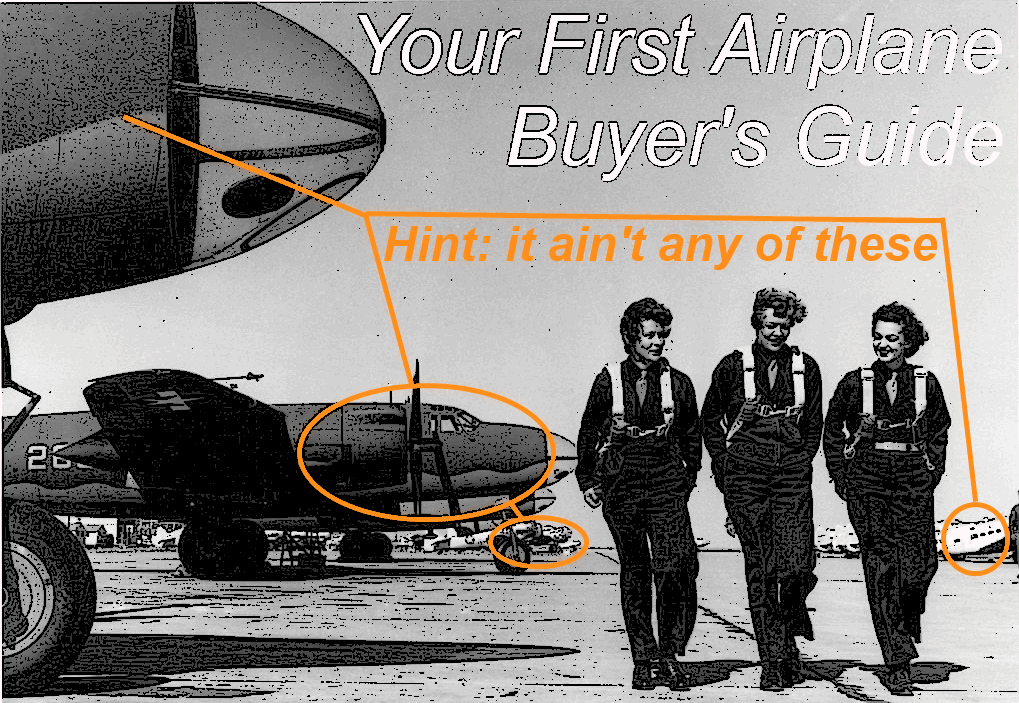
Many, if not all of us, have at one point looked at an airplane and thought how neat it would be to own something like that. Just like how many of us stared at our Countach posters in our bedrooms and thought the same thing. A few of us even become inspired to be actual pilots so we can have a shot at flying something like that. But few of us have an opportunity to crawl into a supercar and drive off at age 16, and likewise strapping yourself into a WWII warbird as soon as you get your private pilot's license isn't a realistic possibility. Car ownership tends to have a clear progression - from Corolla or crossover to Miata or SRT Charger to Porsche or 458 Italia. Airplane ownership isn't any different - in fact it's pretty much mandated by the Federal Aviation Administration. Here's how to achieve those first steps towards owning that fighter jet, and a few choices which you might think are fun enough to hold onto for keeps.
First, What You Can't Buy
First, let's clear up the air and establish rational expectations with what you aren't going to fly off in right away:
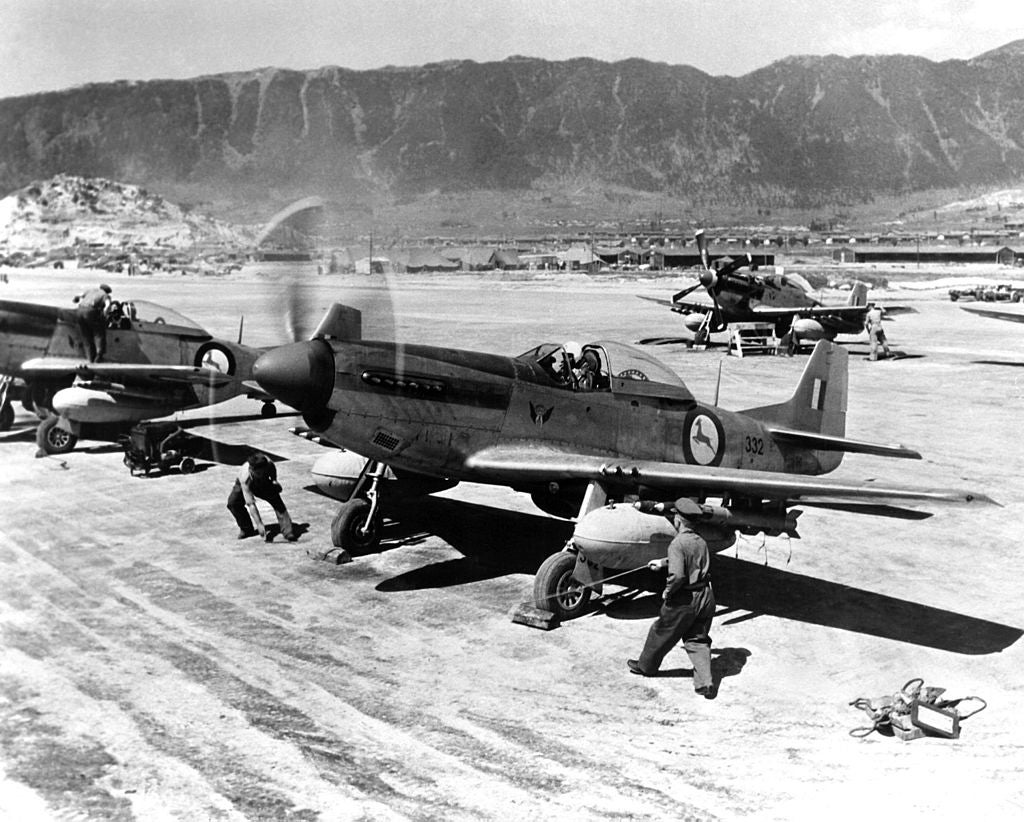
I think most people aren't going to expect to be able to get a P-51 or any other obviously high-performance ex-military plane right off the bat. In addition to their million dollar price tags the performance and flight characteristics are simply far too complicated for a newbie to handle or even (and unfortunately) often for !!!error: Indecipherable SUB-paragraph formatting!!! and requires an entire ground crew to properly maintain (along with the associated expenses). You might as well be owning a business jet.
!!! UNKNOWN CONTENT TYPE !!!
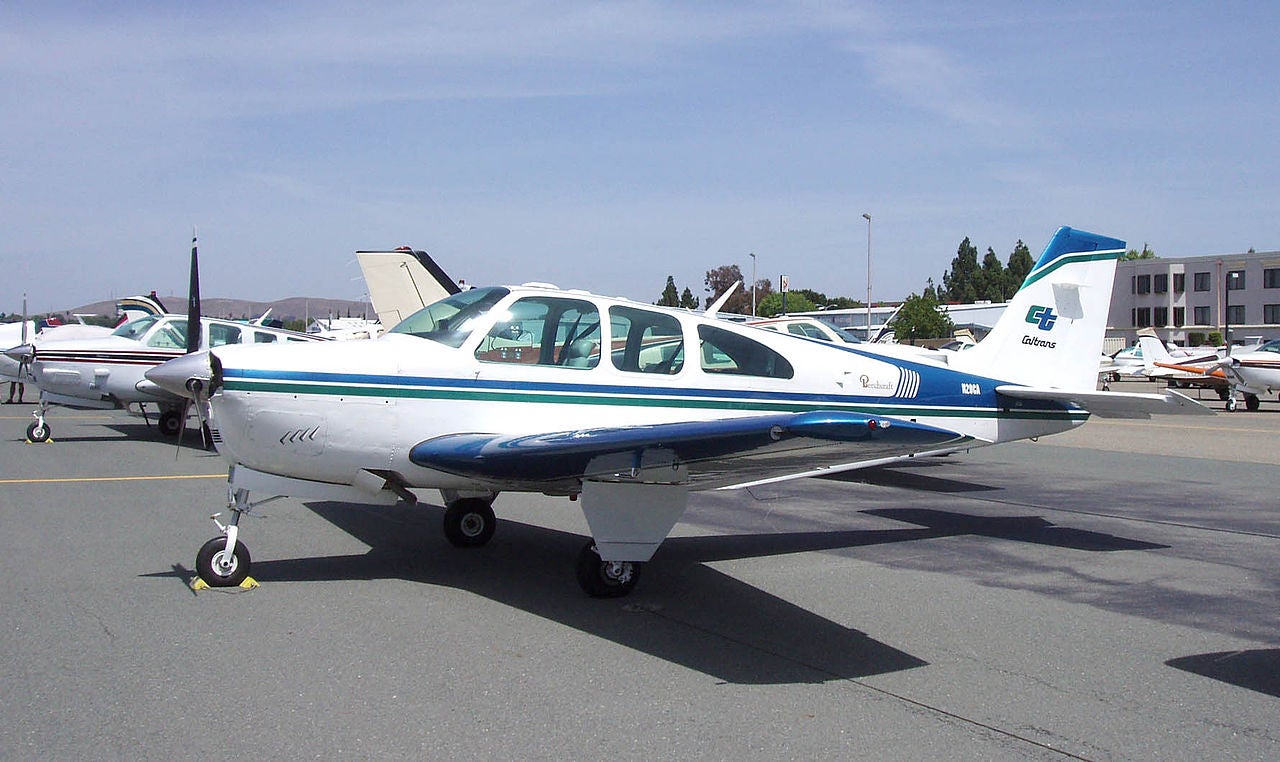
Image credit Bill Larkings via Wikipedia, used under Creative Commons License
But something like this !!!error: Indecipherable SUB-paragraph formatting!!! is more reasonable, right? I mean, look at how mundane it is! It's like a Camry with wings!
Nope!
You really can't judge a book by its cover. It may look fairly plain (plane?), but they don't call the Bonanza the !!!error: Indecipherable SUB-paragraph formatting!!! for no reason. Most infamously the Bonanza is what Buddy Holly, Ritchie Valens and J.P. "The Big Bopper" Richardson died in which gave rise to the song Miss American Pie . The daily driver-esque looks belie a surprisingly complex flying machine capable of speeds not appropriate for a freshly-minted pilot. The general rule of thumb is that if it has retractable landing gear and has an engine well north of 200 horsepower, you better defer that dream for a little bit longer. Hell, the FAA outright says you need a "complex" (that is, any airplane with two of the following features: retractable landing gear, flaps, and a variable-pitch propeller) endorsement and a high-performance endorsement from a qualified flight instructor before you can legally fly something like that. You can also cross off anything that has more than one engine off the list, as that requires a completely new training regimen with hundreds of hours of flight accumulation behind it in its own right.
!!! UNKNOWN CONTENT TYPE !!!

Well what about the !!!error: Indecipherable SUB-paragraph formatting!!! then? It's got fixed landing gear! Plus even though it technically has a variable-pitch propeller, the propeller is actually controlled by mechanical mechanisms outside of the pilot's control, therefore also falling outside of the FAA's definition of a "complex" airplane. It's even got a parachute in the back so it has to be safe, right? I mean, if it's good enough for the Air Force to train fresh pilots on it's good enough for me right?
...not so fast.
Indeed, Cirrus themselves marketed a stripped-down, detuned "SRV" for the civilian training market (which the Air Force T-53A is based on) and many training clubs offer (or even outright push due to profit margins and the high-tech "gee whiz" factor) flight training in the SR20, but it's not an ideal choice for a first airplane to own. In fact the SR20 !!!error: Indecipherable SUB-paragraph formatting!!! even with its parachute. The SR20 is equipped with a high-efficiency, low-drag laminar-flow wing that can make certain landing scenarios very tricky for novice pilots at altitudes too low for the parachute to be effective. To truly operate the SR20 safely requires hundreds if not thousands of hours of experience flying more forgiving types and exposure to those tricky situations in aircraft less likely to kill you. The reason why the Air Force can get away with it is because they have highly experienced instructors accompanying newbie pilots in tightly controlled environments, plus these students usually check out in more forgiving unpowered gliders first (hence !!!error: Indecipherable SUB-paragraph formatting!!! ).
!!! UNKNOWN CONTENT TYPE !!!
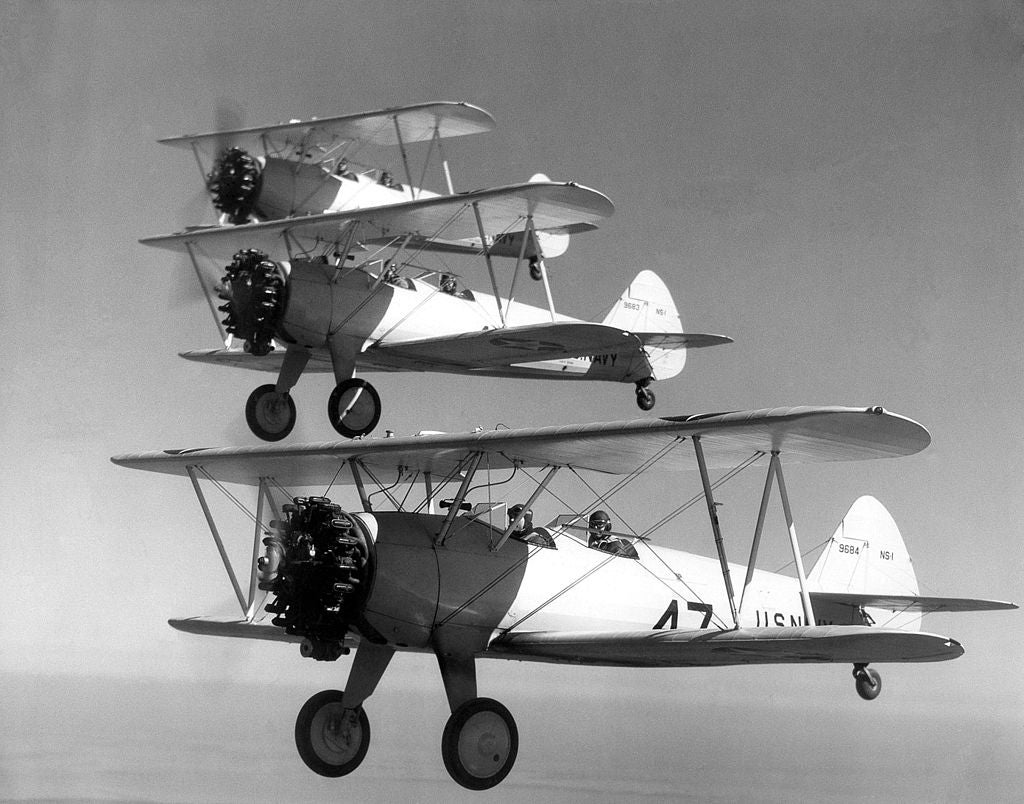
...well what about a !!!error: Indecipherable SUB-paragraph formatting!!! then? I mean, look at that thing! It's a biplane! These things were the first thing many WWII fighter pilots first flew! Plus they're slow so they have to be safe right? You're going to tell me this isn't an appropriate first airplane either?
Yes, exactly.
Besides being well north of the "high performance" endorsement cutoff, the slow speed performance belies a highly aerobatic aircraft that can quickly get a pilot who doesn't know what to do in trouble (these were designed to train fighter pilots after all). You probably can fly it safely right off the bat but given its large size and horsepower (both which make ground handling especially tricky) you should gain a few hundred hours in more forgiving types first.
The whole point of this exercise is to illustrate that various aircraft have certain quirks that can get pilots intro trouble, and very often the people who buy and fly these aircraft are not aware of this problem (particularly when it comes to the Cirrus). Garnering hours in simpler, more forgiving aircraft will help give you the preparation needed to handle the unique performance characteristics and scenarios that may arise through your flying progression and make you a safer pilot.
Available Buyers' Resources
Just like in the automotive world, a plethora of buyers' resources exist to help you get your first aircraft. Ebay Motors also sells aircraft (under the "other vehicles" tab as seen !!!error: Indecipherable SUB-paragraph formatting!!! . A few aviation-only marketplace resources exist too, the most notable being !!!error: Indecipherable SUB-paragraph formatting!!! and !!!error: Indecipherable SUB-paragraph formatting!!! . Both of these resources have print and web-based trade publications available for your perusal. Also worth checking out are aviation magazines (some of which publish buyer's guides on an annual basis) such as !!!error: Indecipherable SUB-paragraph formatting!!! and !!!error: Indecipherable SUB-paragraph formatting!!! , the official magazine of the Airplane Owners and Pilots Association (AOPA). AOPA itself is a great resource, and if you're serious about purchasing an airplane you might want to strongly consider joining.
!!! UNKNOWN CONTENT TYPE !!!
Perhaps the most underrated resource towards airplane ownership is your local flight club. You can talk to experienced flight instructors and airplane owners about their backgrounds in aircraft operation and ownership. Also worth checking out is the Pilot's Operating Handbook (POH) of the prospective airplane you're looking at. Literally the aircraft's owners manual (but POH does sound more pilot-y) the POH lists all the performance characteristics and limitations of the aircraft and will give you a good idea whether or not the plane is simply too much for you to handle right now.
So What Airplanes Are Great For First-Time Ownership?
Chances are, the exact same type of airplanes most flight clubs train their students in. After all, those types are popular as civilian trainers for a reason.
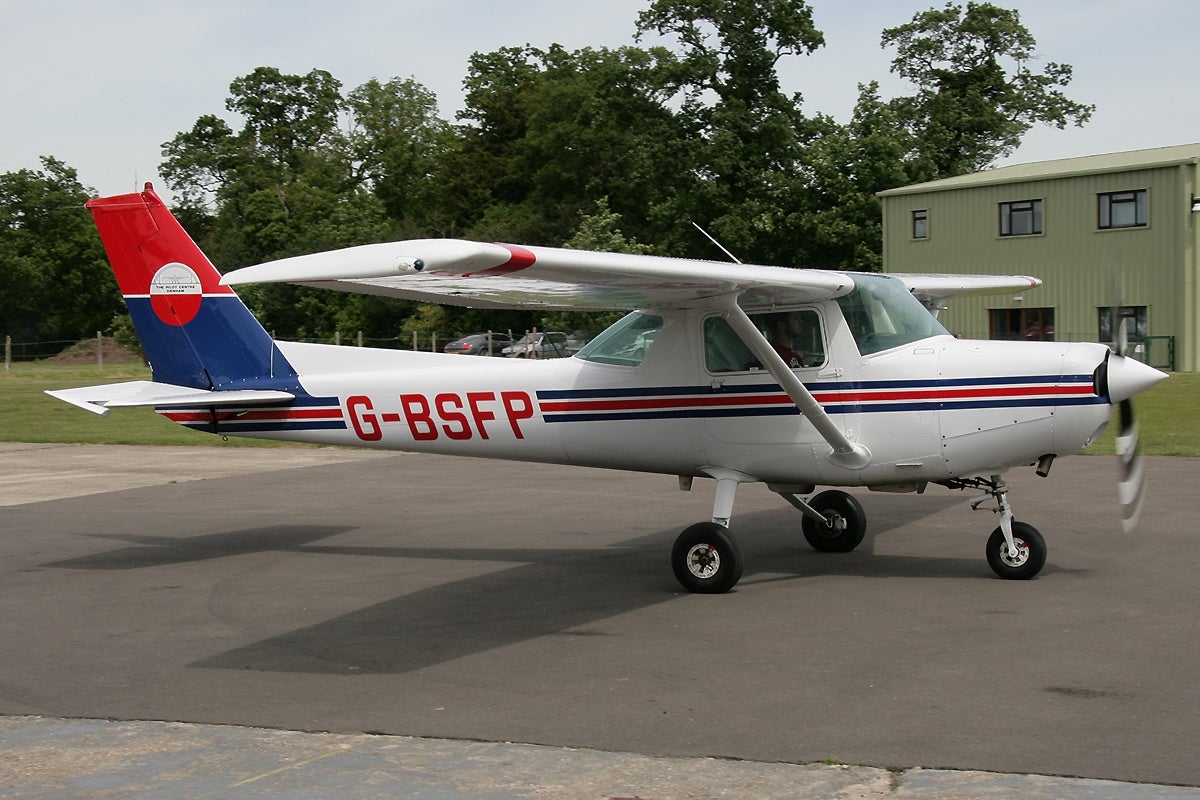
Image by Andrew Wadman via Wikipedia, used under GNU Free Document License
The !!!error: Indecipherable SUB-paragraph formatting!!! pair is probably the most ubiquitous civilian trainer with over 20,000 produced. They're small, lightweight and as simple as a '62 Ford Falcon. Originally conceived as tricycle-gear version of the Cessna 140 (which we'll get to later) the Cessna 150 ended up being a completely new design from the ground-up, and continued to evolve with the later 150s and 152 only having a passing resemblance to even the first model 150. The main difference between the later 150s and the 152 is the type of engine, but the horsepower characteristics are going to be pretty even regardless. Best of all, they're about the cheapest aircraft you can buy. You can pick up a decent example for about the same price as a new Elantra. View a listing of Cessna 152s !!!error: Indecipherable SUB-paragraph formatting!!! .
Despite being purpose-designed as a civilian trainer, there are some things to be aware of. Many of those thing actually pop up because of its trainer heritage. For starters, chances are whatever 150/152 you buy will be an ex-flight club trainer, so an inspection to ensure it hasn't been overly-abused and worn-out might be a good idea. The 150/152 also has slightly less forgiving flight characteristics than its bigger brother, the 172, by design (to allow for spin training) so it won't be as stable, but hardly to a deadly degree. Still might be something to keep in mind if you're concerned about that. The 150/152 also has extremely poor "hot and high" performance out of high-altitude airports in the summer, so depending on what you intend to carry stepping up to a 172 might be mandatory. There's also an aerobatic version, appropriately called the Aerobat, which brings its own set of issues. 150/152 Aerobats should be thoroughly inspected to ensure they haven't been flown outside of their structural limits, and an aerobatic aircraft might offer too many temptations for a novice pilot. That said, the Aerobat is an ideal trainer for wannabe stunt pilots. Tailwheel conversions and higher-power engine swaps are also available if you want to add more excitement.
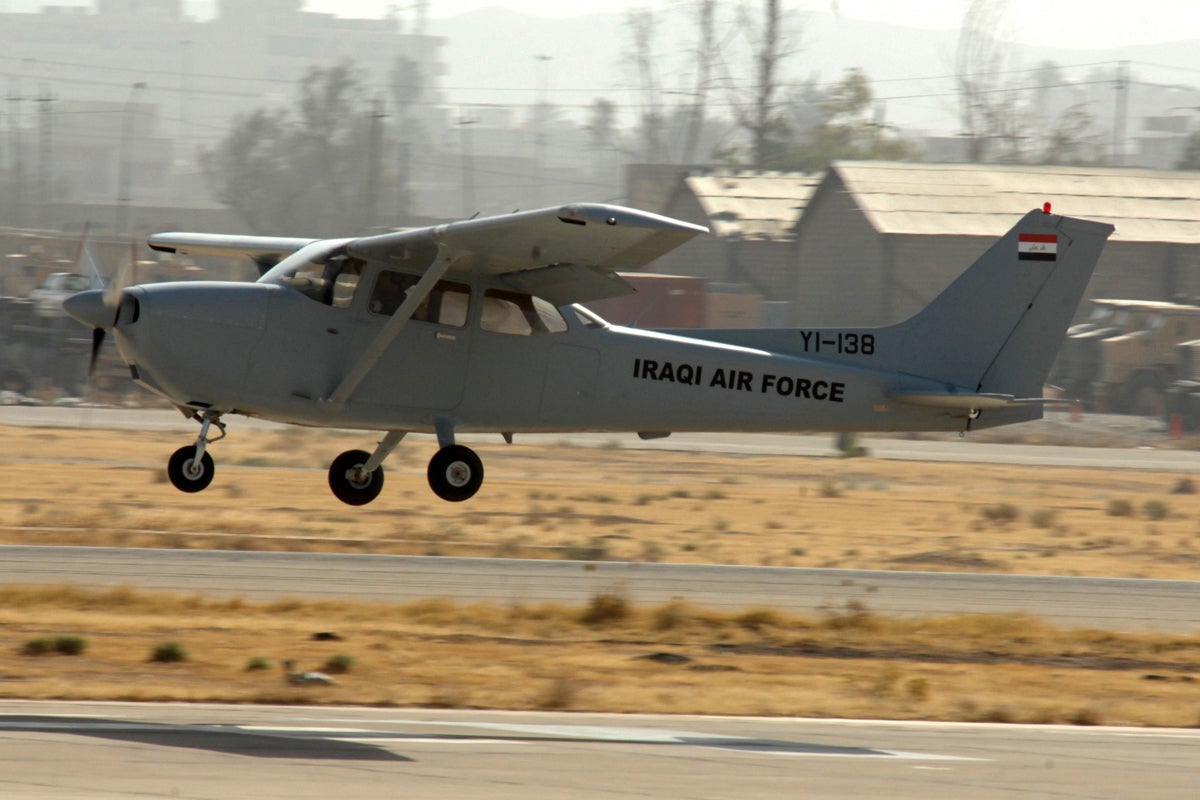
The !!!error: Indecipherable SUB-paragraph formatting!!! !!!error: Indecipherable SUB-paragraph formatting!!! is another ideal first-time aircraft with simple flight characteristics and low cost of ownership. Decidedly not sexy, it's still a good balance of performance, safety and ease of operability. For these reasons many smaller air forces love using it as a trainer as illustrated above (the USAF used to use a more powerful version, too). Originally simply a tricycle-gear version of the 170 (another type to be covered later) the 172 evolved to become a very different aircraft, but almost no matter what version you'll get will be safe and reliable. The 172 is the most mass-produced aircraft in history with almost 50,000 built, so it doesn't' exactly have unique ramp presence, but that shouldn't be your priority right now anyway.
Because 172s are also popular as trainers, you should consider having a prospective aircraft inspected to ensure it hasn't been overly-abused. Other than that I can't think of many issues. With a reputation for being highly spin-resistant, the 172 is a great choice for a family flier. As with the 150/152, performance upgrades exist including tail conversions and engine swaps. Newer 172SPs offer the engine swap from the factory (to 180 horsepower) and more technological goodies but are accordingly more expensive. There have been other "sexier" Skyhawk models in the past too: the 172 Cutlass was a version with retractable landing gear specifically for the training market. Because the gear retracted into the fuselage with a somewhat overly-complicated design, the maintenance headaches lend its own reputation (most owners end up removing the landing gear doors) and the weight of the mechanism gives the nickname "Gutless Cutlass." There was also a relatively rare fixed-gear version with a higher horsepower engine and the Hawk XP with an even higher-rated engine bringing it more in line with the larger Skylane (this version was marketed to floatplane and bush pilots). Depending on age and condition, prices can range from Ford to Ferrari. You can view a listing !!!error: Indecipherable SUB-paragraph formatting!!! .
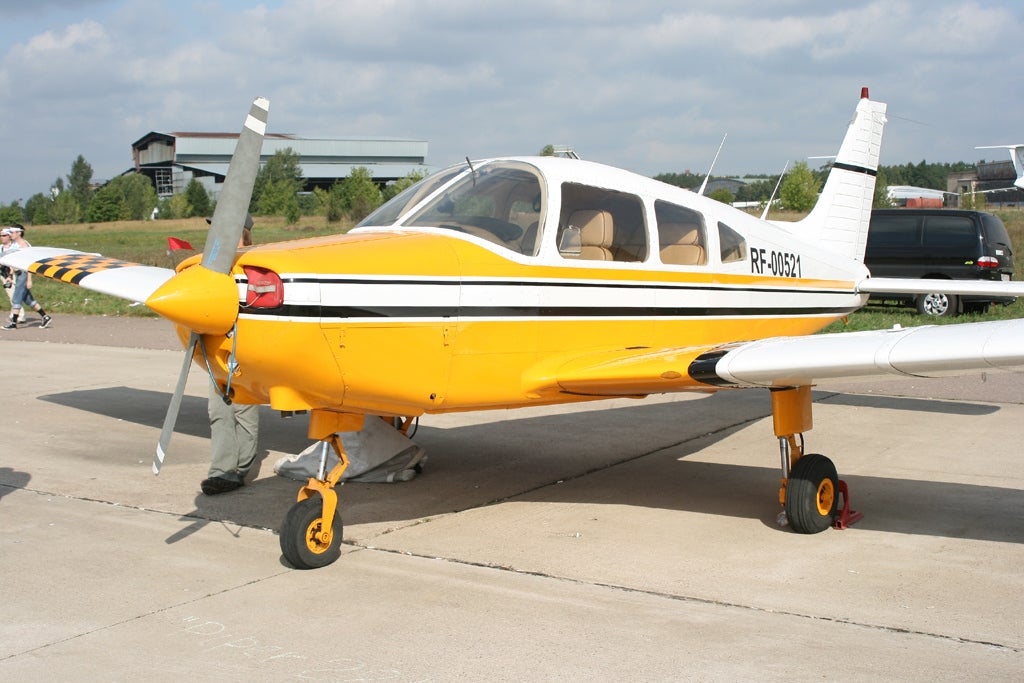
Image by Aktung Ates via Wikipedia, used under GNU Free Document License
Nearly the entire !!!error: Indecipherable SUB-paragraph formatting!!! range offers great first-time buys as well. The Piper Cherokee has gone through about half a century of evolution so far and has branched out into a plethora of sub-models which admittedly makes things confusing (and you thought Infiniti was bad at this). The most basic and earliest models were distinguished by horsepower ratings of 140 all the way up to 235 and were later divided into separate submodel ranges. The Warrior is the most basic with 160 horsepower and not much in the way of amenities; it's a stripped-down model made cheap for flight schools. Good enough for them; good enough for you. The Warrior is hard to beat for sheer simplicity. The most common model is the Archer which itself has gone through several iterations but all of them offer the same 180 horsepower engine that's been with the plane since the 60s and 70s (with the exception of a recently added diesel engine option - yes, I suppose that does make it more Jalop). Depending on what model year you're looking at the Archeralso offers a few amenities like leather and computer navigation and flight aids; expect to pay higher prices for these newer models but they still represent a good buy compared to competitors. The Dakota and its 235 horsepower engine just breaks the "high performance" cutoff but still makes a good aircraft to get that endorsement on, as well as a great first-time family cross-country flier if you need something with a little more oomph than an Archer or Skyhawk. Unfortunately production stopped in the 80s due to lagging sales, so you won't be able to find the latest gear in one without upgrading it yourself. The Arrow is specifically adapted for "complex aircraft" flight training and makes a great first-time buy for someone looking for that kind of aircraft, but its relatively marginal speed advantage does little to justify the increased ownership and insurance costs (a Dakota or Skylane makes for a smarter buy).
As these are also very popular with flight clubs, you might want to check out the ownership history before you buy. There have also been various issues with the entire Cherokee line in the past, so you might want to check out all the Airworthiness Directives (ADs) for that particular model and hit the dedicated message boards. The price range is as diverse as the Cessna Skyhawk;you can view a listing !!!error: Indecipherable SUB-paragraph formatting!!! .
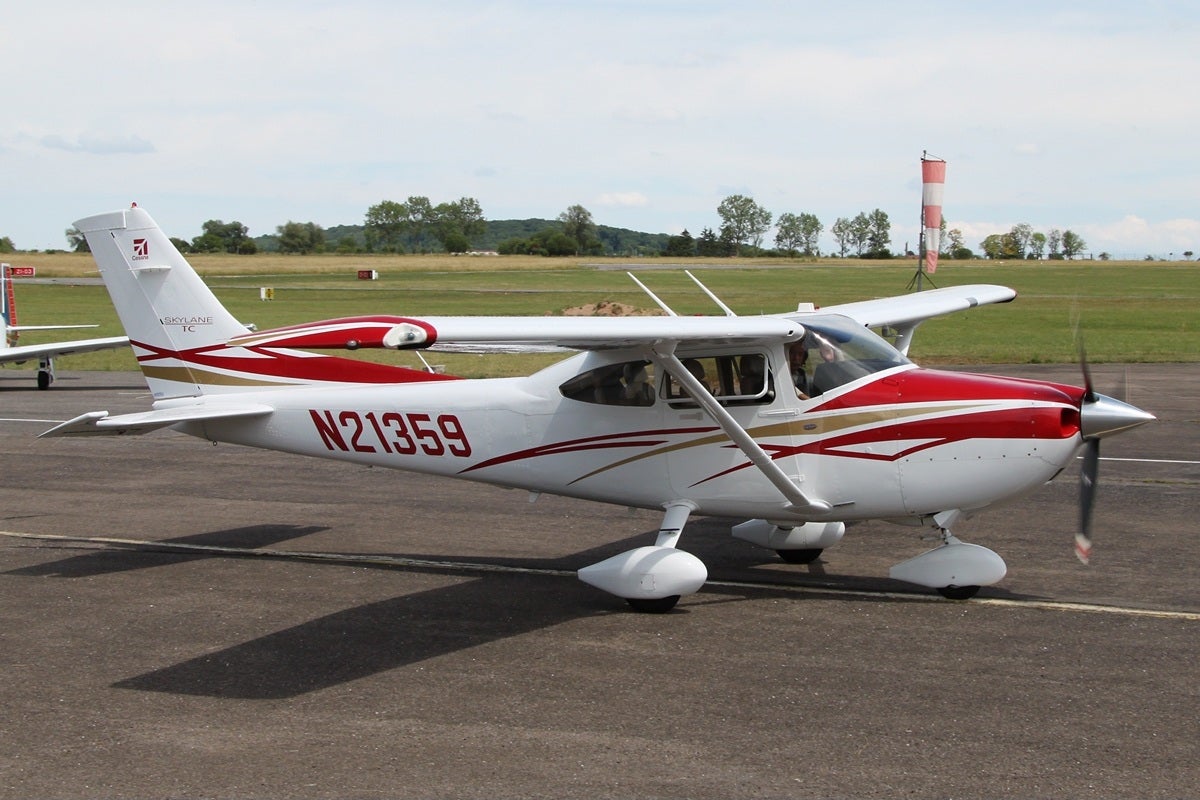
Image by Peter Bakema via Wikipedia, used under GNU Free Document License
The !!!error: Indecipherable SUB-paragraph formatting!!! !!!error: Indecipherable SUB-paragraph formatting!!! is basically a 172 Skyhawk with a "high performance" engine in it. Some models are also turbocharged, not necessarily for added speed but better high-altitude performance. Like the 172 Skyhawk the 182 Skylane has a reputation for being a very stable flight platform and is a very appropriate choice for a slightly higher-performing cross-country family flier or as a lead-in trainer towards more capable aircraft. Like the Piper Archer, the Skylane also has a new diesel engine option. Past versions include the Skylane RG with "RG" standing for "Retractable Gear." Like with the 172 Cutlass, it was meant for the trainer market but also had better success with private owners. Also like the 172 Cutlass it's questionable if the gear retract option really justifies itself. The aftermarket is pretty extensive as well, including STOL (Short Take-Off and Landing) kits available and a Cirrus-like parachute option. !!!error: Indecipherable SUB-paragraph formatting!!! ...which probably wasn't the best choice, all things considered.
Like the smaller 150/152 and Skyhawk, the Skylane has seen extensive service in training fleets but tend to be somewhat better taken care of as pilots gain experience on the smaller aircraft before stepping into this. More than a few engine and fuel tank tweaks have been made over the years and many models, so check the ADs and message boards to get a handle on the more "interesting" quirks. Earlier Skylanes had "fastback" fuselages and square vertical stabilizers borrowed from their tailwheel progenitors which many pilots feel is more attractive and distinguishable, while the latest versions have cowling tweaks and reshaping for a more streamlined look. A listing of 182 Skylanes for sale can be viewed !!!error: Indecipherable SUB-paragraph formatting!!! .
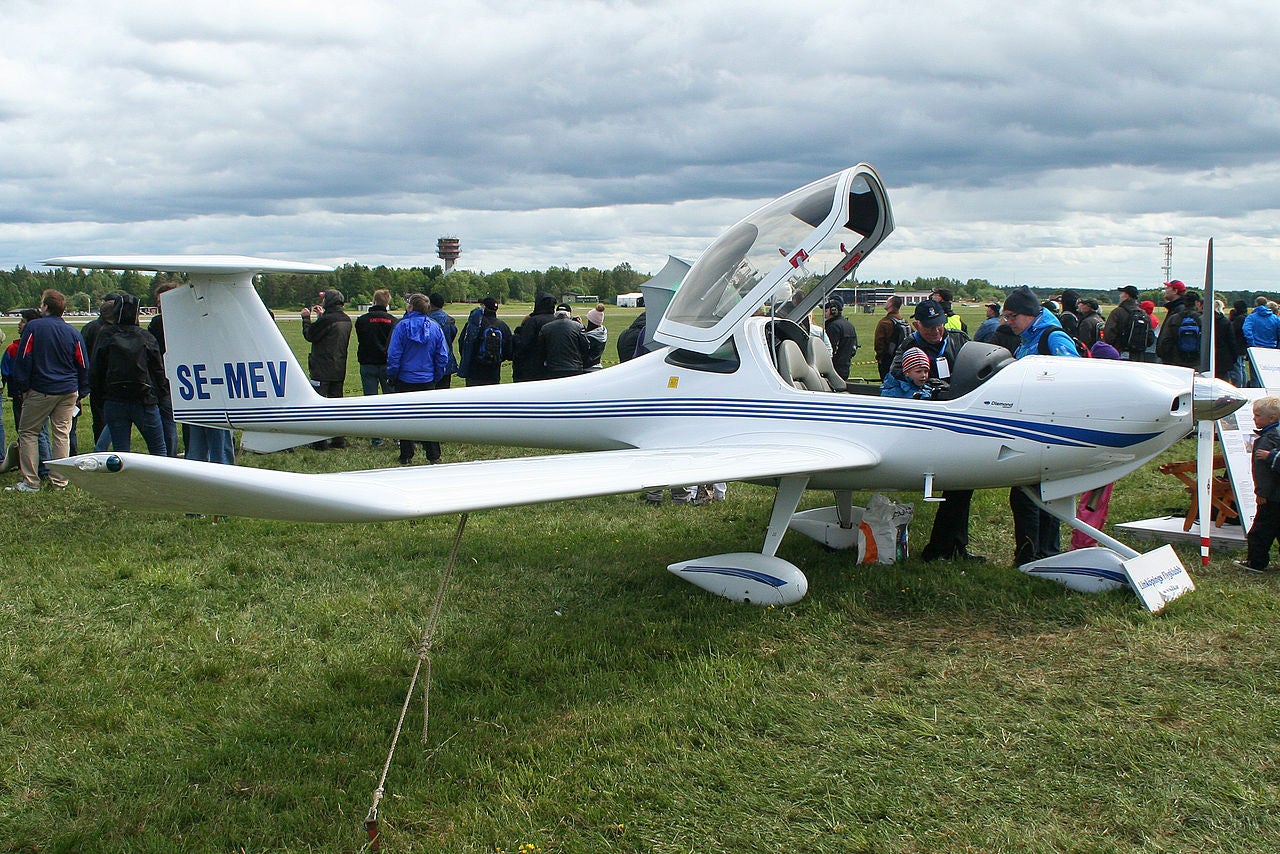
Image by Alan Wilson via Wikipedia, used under Creative Commons License
The !!!error: Indecipherable SUB-paragraph formatting!!! of aircraft is adapted from an Austrian motorglider design and is manufactured in Canada. As such, it's nice, big long wing provides inherent stability and extended safety margins. I haven't heard of many issues with these aircraft, though I found the somewhat hard seats and large bubble canopy to be somewhat uncomfortable on hot days. Because it is a relatively new design, prices can be on the high side. View a listing of available DA20s !!!error: Indecipherable SUB-paragraph formatting!!! .
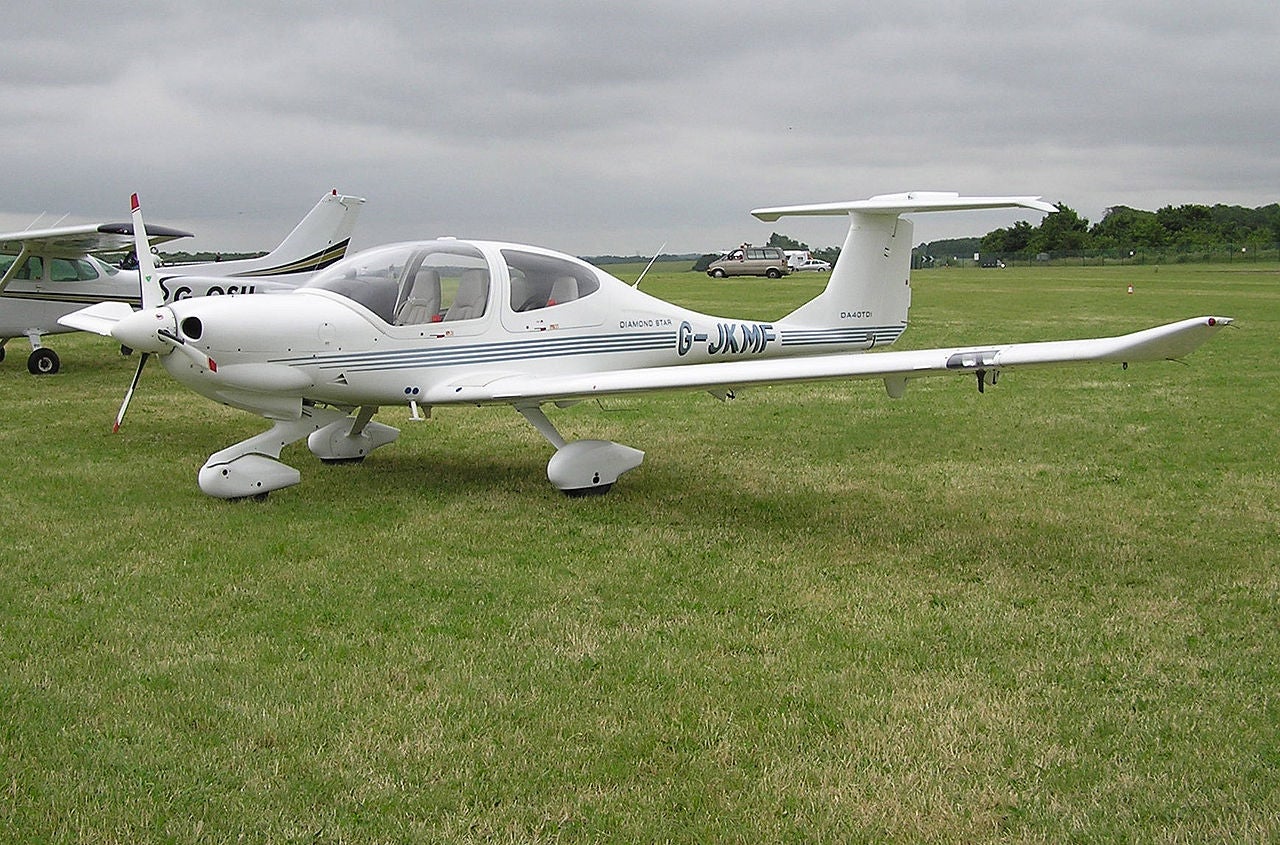
The !!!error: Indecipherable SUB-paragraph formatting!!! !!!error: Indecipherable SUB-paragraph formatting!!! is Diamond's answer to the Cessna 172 Skyhawk. As such, it offers more performance than the DA20 and two extra seats. The Air Force used to use them as trainers (designated T-52A) but due to a somewhat complicated leasing deal they were replaced with actual Air Force-owned Cirruses. They also got into the diesel engine game before Cessna and Piper, using adapted Mercedes-Benz engines no less. Once again, it's a safe and highly efficient cross-country and family flier option.
One of the downsides of entering into the diesel engine game early is running into early-adopter problems; the company that converted the MB engines for Diamond, !!!error: Indecipherable SUB-paragraph formatting!!! , ran into a bit of a scandal which took them ultimately into insolvency. Thielert still lists their engines as being in production, but Diamond has since gone to !!!error: Indecipherable SUB-paragraph formatting!!! designs, a company owned by Diamond itself. The DA40 is also going to command higher prices on the used market than the older Cessna and Piper designs. Finally, I just plain-old think it looks ugly. I mean, it kind of looks like a deformed flying tadpole. But if that's your thing you can view a listing !!!error: Indecipherable SUB-paragraph formatting!!! .
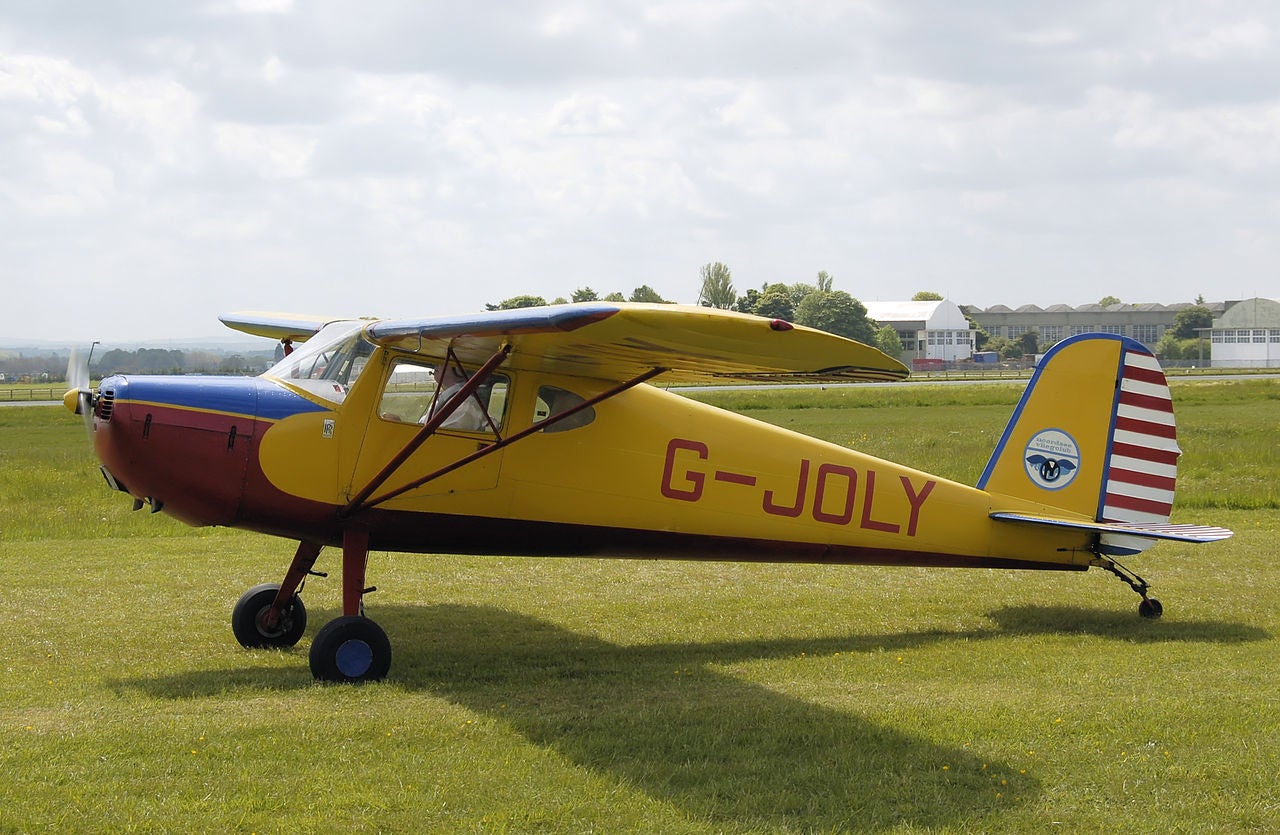
Photo by Adrian Pingstone, released to the public domain
The !!!error: Indecipherable SUB-paragraph formatting!!! is what came before the 150/152 and fulfilled the same niche of civilian training right after WWII. It was also highly popular with private pilots who need not carry more than themselves. To fly one of these today requires a tailwheel endorsement, but depending on the quality of training isn't hard to knock out and can be done soon after or even concurrent with your private pilot training. The 120/140 are exceedingly simple (the last version, the 140A, added such fancy luxury gadgets as landing flaps) and features a clean and attractive all-metal fuselage attached to fabric-covered "rag" wings. They're also pretty economical to operate.
The "rag" wing does bring up higher maintenance concerns as they require periodic redoping and are vulnerable to holes, tears and UV damage you wouldn't see in a metal design (but by the same token, are less vulnerable to dents). As these are older aircraft, many are in a state of rebuild. As these are regarded as classic aircraft, prices aren't as low as they once were, but still affordable. They also aren't nearly as ubiquitous as their newer siblings and owners tend to hang on to them - Controller.com currently has only !!!error: Indecipherable SUB-paragraph formatting!!! .
!!! UNKNOWN CONTENT TYPE !!!
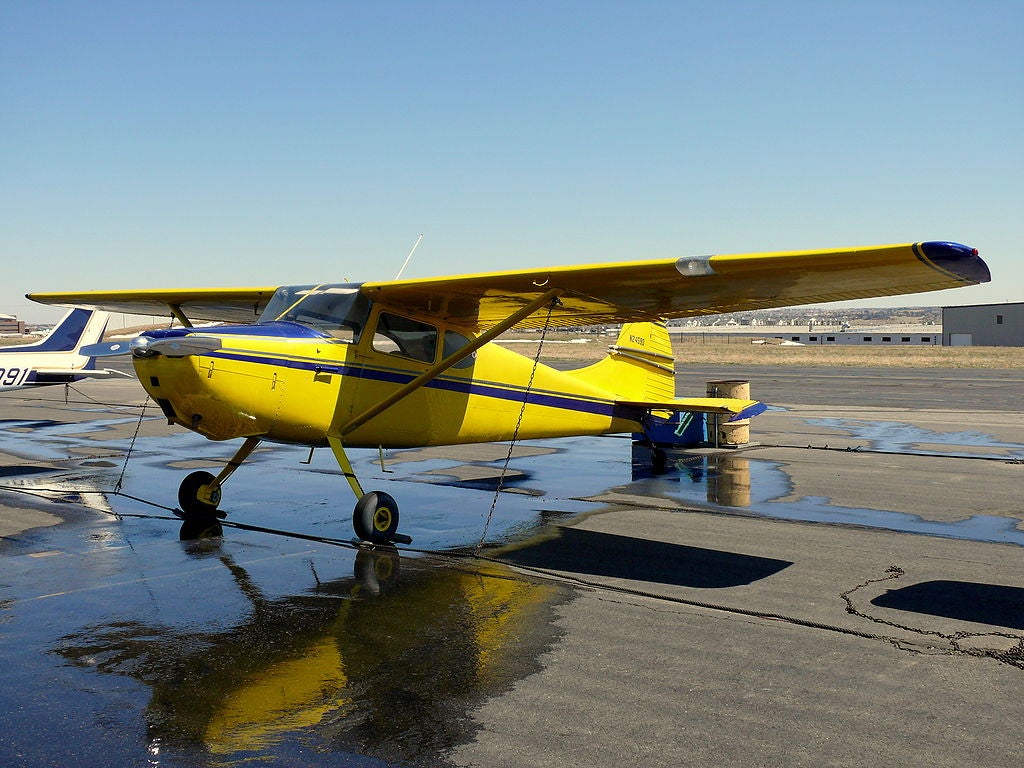
Likewise the !!!error: Indecipherable SUB-paragraph formatting!!! is the tail-dragging predecessor to the Cessna 172 Skylane. First-generation Cessna 172s were in fact little more than 170Bs with the third wheel on the wrong end and a squared-off tail. Essentially a 140 stretched for a second row of seats, the first 170s retained the "rag" wing but the 170A introduced an all-metal wing. The Air Force ordered a special model of the 170 which Cessna designated the 305, more famously known by its Air Force designation L-19 Bird Dog which served with distinction in Korea and Vietnam. The Bird Dog featured a more powerful engine and the clear-window "notch-back" fuselage that likely served as inspiration for the later 172 models.
The 170, as with the 120/140, also has a high owner retention rate and its "classic" status has kept depreciation rates at bay. It's especially popular with bush pilots for its rugged design and the tailwheel which keeps the propeller out of the rocks and weeds. Controller.com, in fact, currently lists a whopping !!!error: Indecipherable SUB-paragraph formatting!!! .
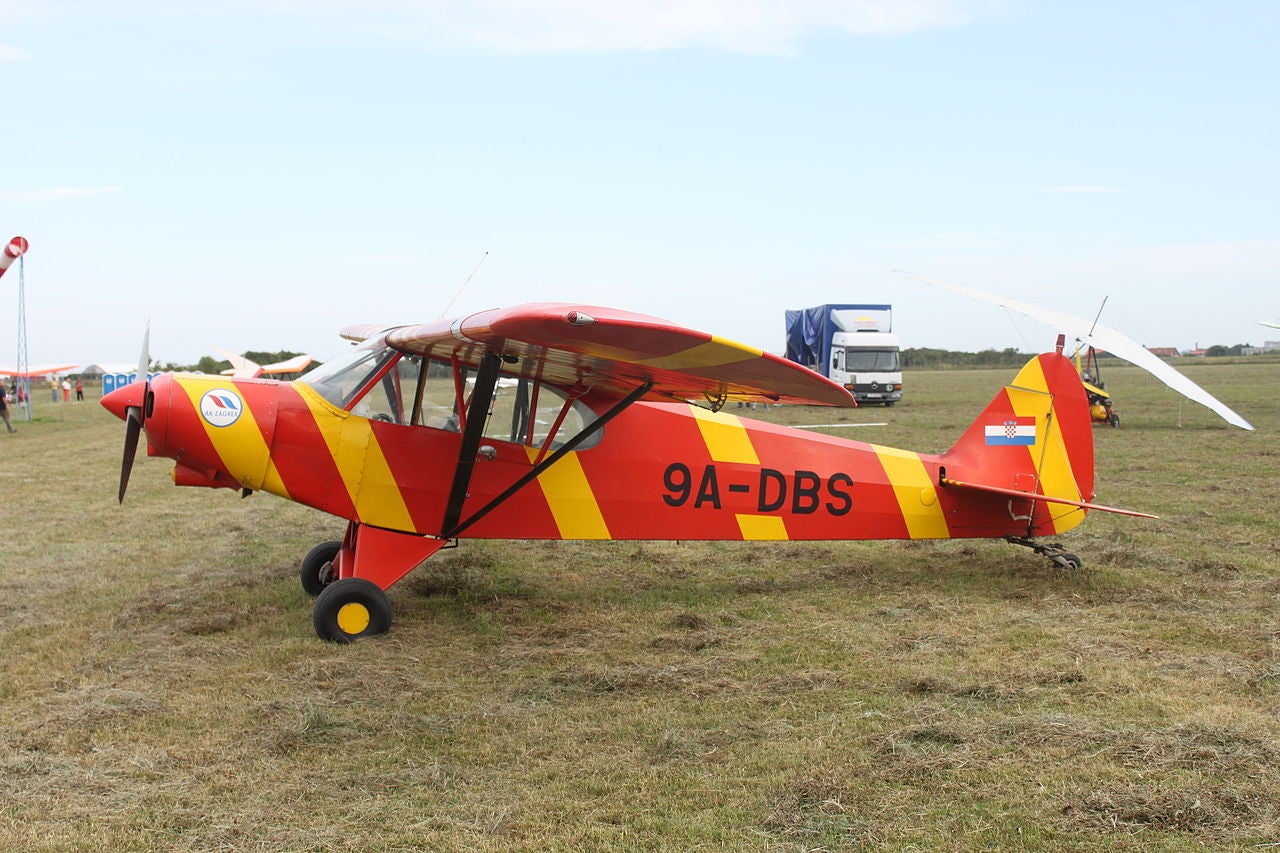
Image by Jerry Gunner via Wikipedia, used under Creative Commons License
The Piper J-3/PA-18 Cub/Super Cub has had such a long production and development history with so many spin-offs it can use its own dedicated buyer's guide. The original J-3 Cub was described as the Model T of the air - and it's only become even more true given the myriad of reproductions and aftermarket options turning the basic design into almost whatever you want it to be. All Cub/Super Cub variants follow the same basic layout of a fabric-covered tube frame with tandem seating (the pilot typical sits in the back). Other than that, it's entirely dependent on what you're willing to spend towards what end. A basic trainer, bush plane or fully aerobatic aircraft are all within a fairly straightforward rebuild given you know what you're doing (or just buy one where someone already did the work for you). You can find a listing of various Cub models !!!error: Indecipherable SUB-paragraph formatting!!! .
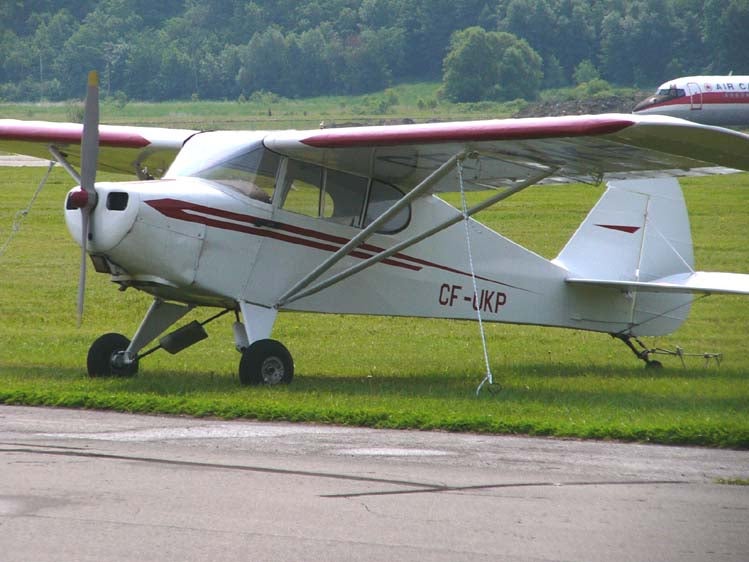
A related development is the !!!error: Indecipherable SUB-paragraph formatting!!! with side-by-side seating as opposed to tandem. They tend to be more rare than Super Cubs but that hasn't effected depreciation at all. That said, good luck finding one.
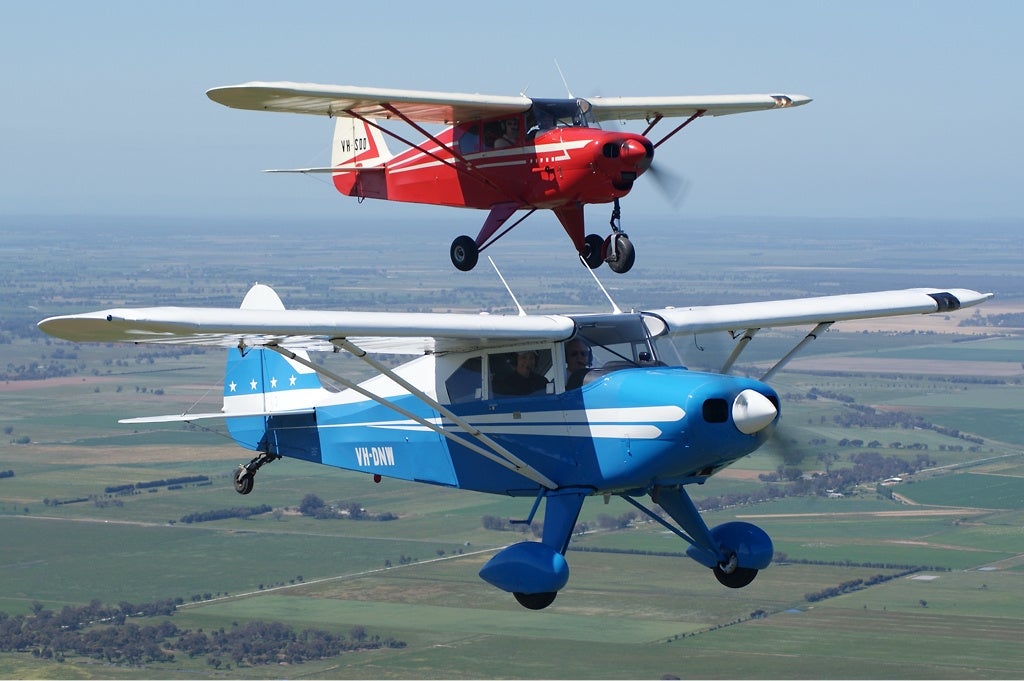
Image by Phil Vabre via Wikipedia, used under GNU Free Document License
The !!!error: Indecipherable SUB-paragraph formatting!!! was a more successful adaptation of the PA-17 Vagaond design, though its all-fabric design was already seen as antiquated compared to the contemporary all-metal Cessna 170A. The Clipper extended the fuselage to add extra seats and refined the fuselage compared to the Vagabond. Pan American Airways which owned the copyright to the "Clipper" name didn't like Piper using it, so while they were at it Piper revised the fuel tanks and control scheme to invent the PA-20 Pacer. Later a clumsy nosewheel setup was added to compete against the Cessna 172, creating the PA-22 Tri-Pacer. So awkward and clumsy-looking, in fact, that many owners subsequently put the wheel back on the back (both aircraft above are actually PA-22s). The Colt deleted the rear seat to make a stripped-down trainer, basically turning it into a tricycle-wheel Vagabond.
These planes, being structurally related to the Super Cub, also have an extensive aftermarket so if there's something you don't like or think is wrong with it, chances are you can change it. Popular as bush planes, they're pretty common, so prices are kept low even for especially nice ones and making them highly capable alternatives to even newer Cessnas. See for yourself !!!error: Indecipherable SUB-paragraph formatting!!! . The !!!error: Indecipherable SUB-paragraph formatting!!! is the same idea but done earlier with the longer Super Cub frame; it never took off in popularity as much as its narrower brother or even shorter cousin for some reason and they tend to be snapped by by bush pilots. That said, !!!error: Indecipherable SUB-paragraph formatting!!! aren't too hard to find (a variant of the Super Cub with an extra wide back seat for three people total that was expanded into the Family Cruiser).
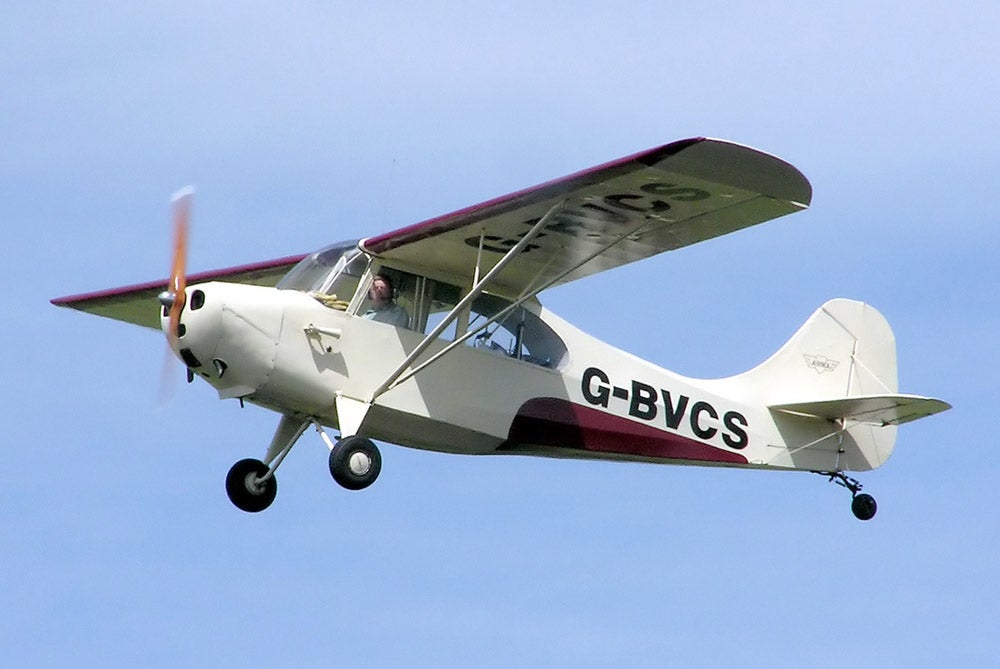
The !!!error: Indecipherable SUB-paragraph formatting!!! series was a competing answer to Piper's Cub and Super Cub; although not as famous, they're very common, cheap, and have a huge aftermarket behind them. The many variants and sub-variants again can fill its own buyer's guide. They include versions with the third wheel on the nose and even the very rare !!!error: Indecipherable SUB-paragraph formatting!!! which was a twin-engine fixed-gear version meant for the training market (sales were stymied when the FAA said it was too simple to qualify towards multi-engine training). After Aeronca went belly-up, the design proved too good to go with them; it passed through various companies and acquisitions (not unlike Jeep) and the design remains in production today by !!!error: Indecipherable SUB-paragraph formatting!!! as the Scout and the aerobatic-capable Citabria (the name being Airbatic spelled backwards) and Decathlon/Super Decathlon. When James May isn't busy racing Cessnas against Bugattis, !!!error: Indecipherable SUB-paragraph formatting!!! . The earliest and most basic variants with the smallest engines are especially economic with fuel burn rates being compared to some large SUVs (yes, that's considered Prius-territory when it comes to airplanes).
The Decathlon and especially Super Decathlon are fully aerobatic aircraft frequently used for displays and competition so it's outside the scope of a first-time buyer, though the Citabria is frequently used as an aerobatic trainer. Once again, the aftermarket is so active the plane can be changed to better suit your tastes. Because it's been through multiple manufacturing licenses tracking down listings can be a challenge, but you can view one such listing !!!error: Indecipherable SUB-paragraph formatting!!! .
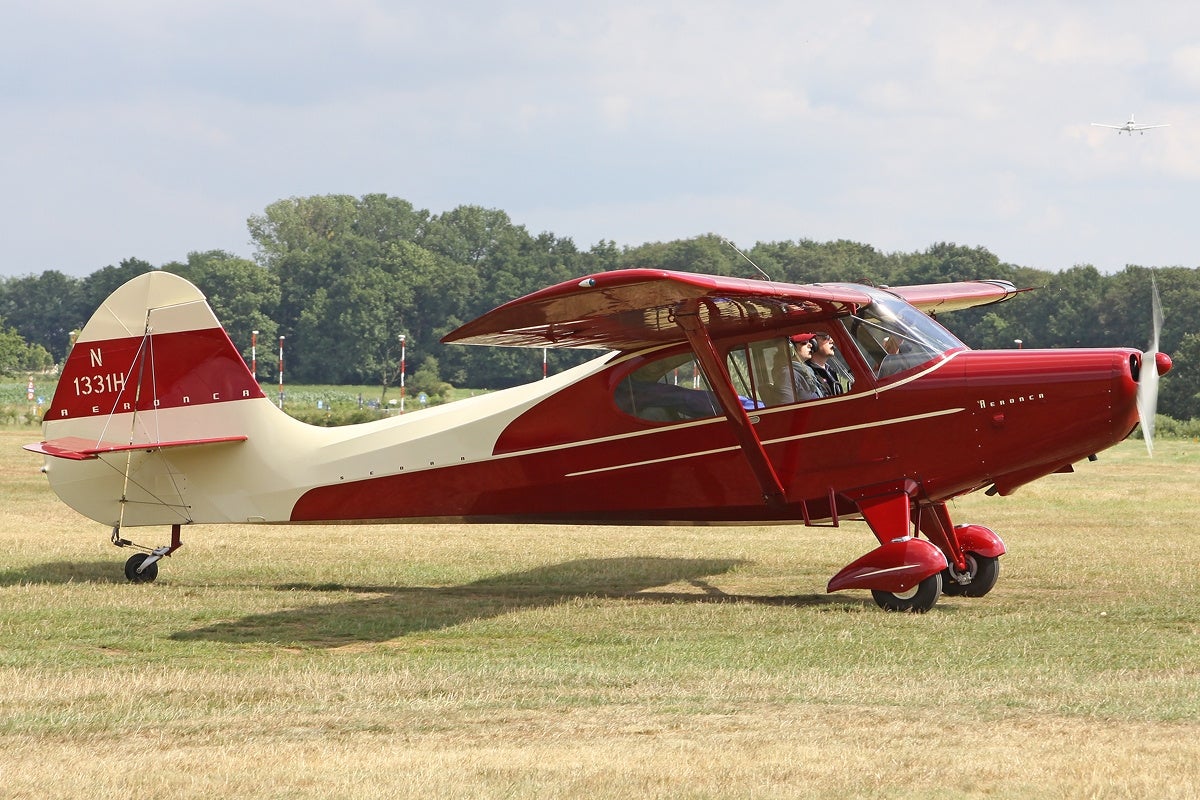
Image by Andre Wadman via Wikipedia, used under GNU Free Document License
The !!!error: Indecipherable SUB-paragraph formatting!!! is to the Champion as what the Piper Pacer and Cessna 170 were to the Super Cub and 140. It's so simple and forgiving Aeronca never bothered to fit the design with landing flaps - the large wing pretty much floats down on its own. Despite its forgiving flight profile and SUV-like ruggedness and payload, its slow speed compared to the competition (it had a 115 horsepower engine up front when Piper and Cessna were running 135 horsepower and up) relegated it to also-ran status. Consequently it's more rare than Piper or Cessna offerings and they tend to get snapped up and modded to decent extremes by the bush pilot community (including more powerful engines). Given all that, if there was one airplane I'd buy on this list, it'd probably be this one. You can view all two listed at Trade-A-Plane !!!error: Indecipherable SUB-paragraph formatting!!! , including !!!error: Indecipherable SUB-paragraph formatting!!! .
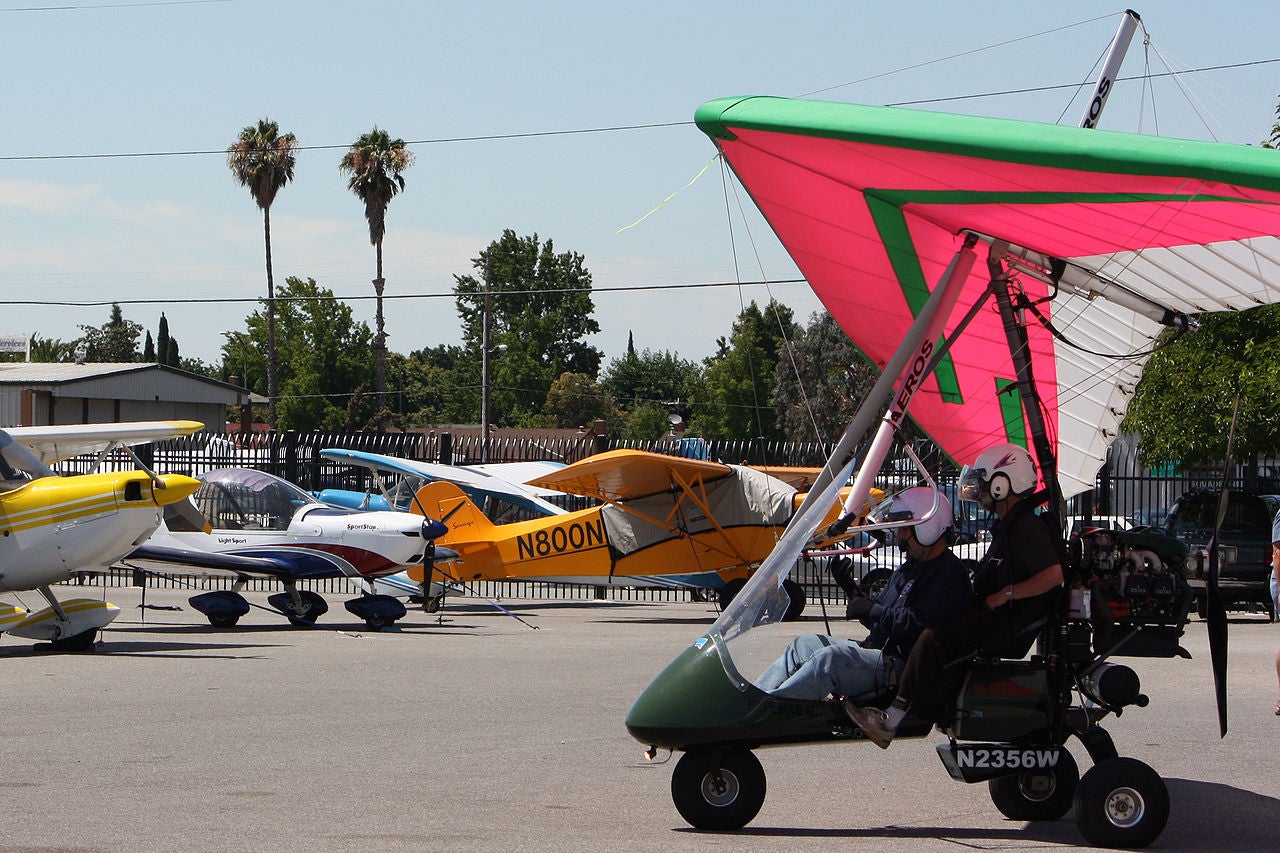
Image by "Cavebear42" via Wikipedia, used under Creative Commons License
The final aircraft on this list isn't an aircraft at all, but a very broad category of aircraft known as !!!error: Indecipherable SUB-paragraph formatting!!! . LSAs come in all shapes and sizes and are as diverse as the field of aviation itself, but they all share the same general flight and performance characteristics as established in FAA LSA guidelines. The LSA category is specifically designed to provide an easy and affordable way into recreation flying. Options include kit-built aircraft and factory new-builds and range from the more simple Cub and Champion variants as listed above (both older aircraft grandfathered in and new production frames) to ultra-modern fiberglass European exotics like the !!!error: Indecipherable SUB-paragraph formatting!!! , sold in the US by Piper as the PiperSport. There's in fact !!!error: Indecipherable SUB-paragraph formatting!!! but !!!error: Indecipherable SUB-paragraph formatting!!! making LSA-complaint Piper Cub replicas. Yeah, things can get kind of crazy when it comes to LSA shopping.
Because of the immense diversity and relative uniformity in actual performance in the LSA market, navigating it can be daunting. It might behoove you to look on various aviation forums and ask around for various people's opinions, and start narrowing it down from there. Just because the FAA says they have to fall within the same performance envelope, doesn't mean they're all created equally.
Ownership Alternatives
Regardless of which airplane you decide is right for you, owning and operating it can be expensive as costs add up real quick. In addition to the plane itself, there's fuel, insurance, labor, hanger rental, and it goes on. For this reason many new pilots simply elect to rent aircraft from their local flight clubs.
When renting, be sure to check out the various policies of the flight club (including the stipulations on their insurance policy). Also give the aircraft a thorough pre-flight inspection - if for any reason you feel uncomfortable with the aircraft, ask to see if another one is available. Be prepared to provide evidence of appropriate endorsements for a particular aircraft type, and don't try to bite off more than you can chew. If you feel comfortable only in Cessna 172s, then that's what you'll be renting. Finally, remember that rental aircraft are just like their automotive counterparts - often flown by younger and less experienced pilots who are prone to hard landings. Some shakes and rattles can probably be lived with, but there's no reason to fly a plane you think has been unsafely compromised or is simply too uncomfortable for a cross-country flight.
 Glucklich21- master of the cones
> No, I don't thank you for the fish at all
Glucklich21- master of the cones
> No, I don't thank you for the fish at all
07/26/2014 at 13:15 |
|
Why must you crush my dreams of buying a Mooney M20C? :(
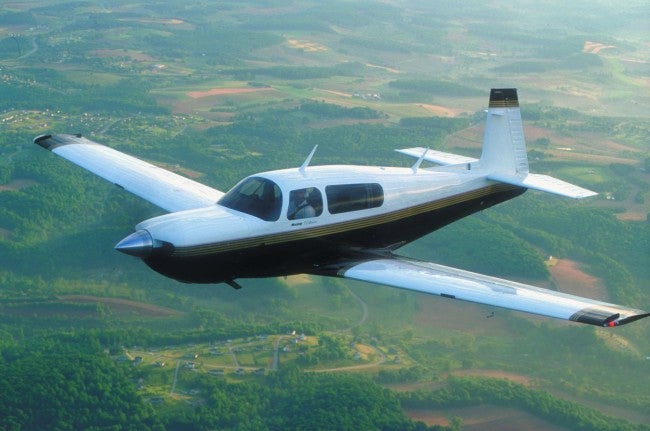
 shitheelandtoe
> No, I don't thank you for the fish at all
shitheelandtoe
> No, I don't thank you for the fish at all
07/26/2014 at 16:20 |
|
So, not a 777 then? Damn.
 Dirt Baggington
> Glucklich21- master of the cones
Dirt Baggington
> Glucklich21- master of the cones
07/26/2014 at 16:20 |
|
 Tyler Rogoway
> No, I don't thank you for the fish at all
Tyler Rogoway
> No, I don't thank you for the fish at all
07/26/2014 at 16:24 |
|
Cool post but thousands of hours to safely operate an SR20, not quite. Also, you don't need many hundreds of hours of flight accumulation to get your twin engine rating.
 npg
> No, I don't thank you for the fish at all
npg
> No, I don't thank you for the fish at all
07/26/2014 at 16:25 |
|
I like this article. I have pretty much decided that my first plane will be a Pacer or Tri-Pacer for the reasons you already listed. I have a good friend that is also working towards his PPL right now and if you co-owned a Pacer plane ownership starts to look much more affordable.
 My X-type is too a real Jaguar
> No, I don't thank you for the fish at all
My X-type is too a real Jaguar
> No, I don't thank you for the fish at all
07/26/2014 at 16:28 |
|
Another thing, yes you can can drunkenly purchase a Cessna 172 on Ebay, at 2am for around 6 grand (At least you could in 2003 when I did just that). However pre-purchase inspections are recommended for a reason.
Truth is, when I was done I had a very nice 172 outfitted just how I wanted for about what I would have paid for a nice one so it wasn't all bad.
 Nick drives Stick (not Stig)
> Glucklich21- master of the cones
Nick drives Stick (not Stig)
> Glucklich21- master of the cones
07/26/2014 at 16:30 |
|
My dream hangar is a Piper Malibu Matrix next to a Extra 300 however I'm still pretty low on hours (got my license in 2011) so I want a couple of hundred hours more in my logbook before I get into either of those planes. My acquisition plan is within reasonable time to get a Piper Arrow (I've had my complex endorsement for 2 years) and maybe start flying Decathlons for basic aerobatics. Greg Koontz has a get Aerobatics school in Alabama that I definitely want to try out!
 Lahjik
> No, I don't thank you for the fish at all
Lahjik
> No, I don't thank you for the fish at all
07/26/2014 at 16:30 |
|
According to the Marine veteran pilot who taught my ground school, this is the most fun you can have with wings and no guns:
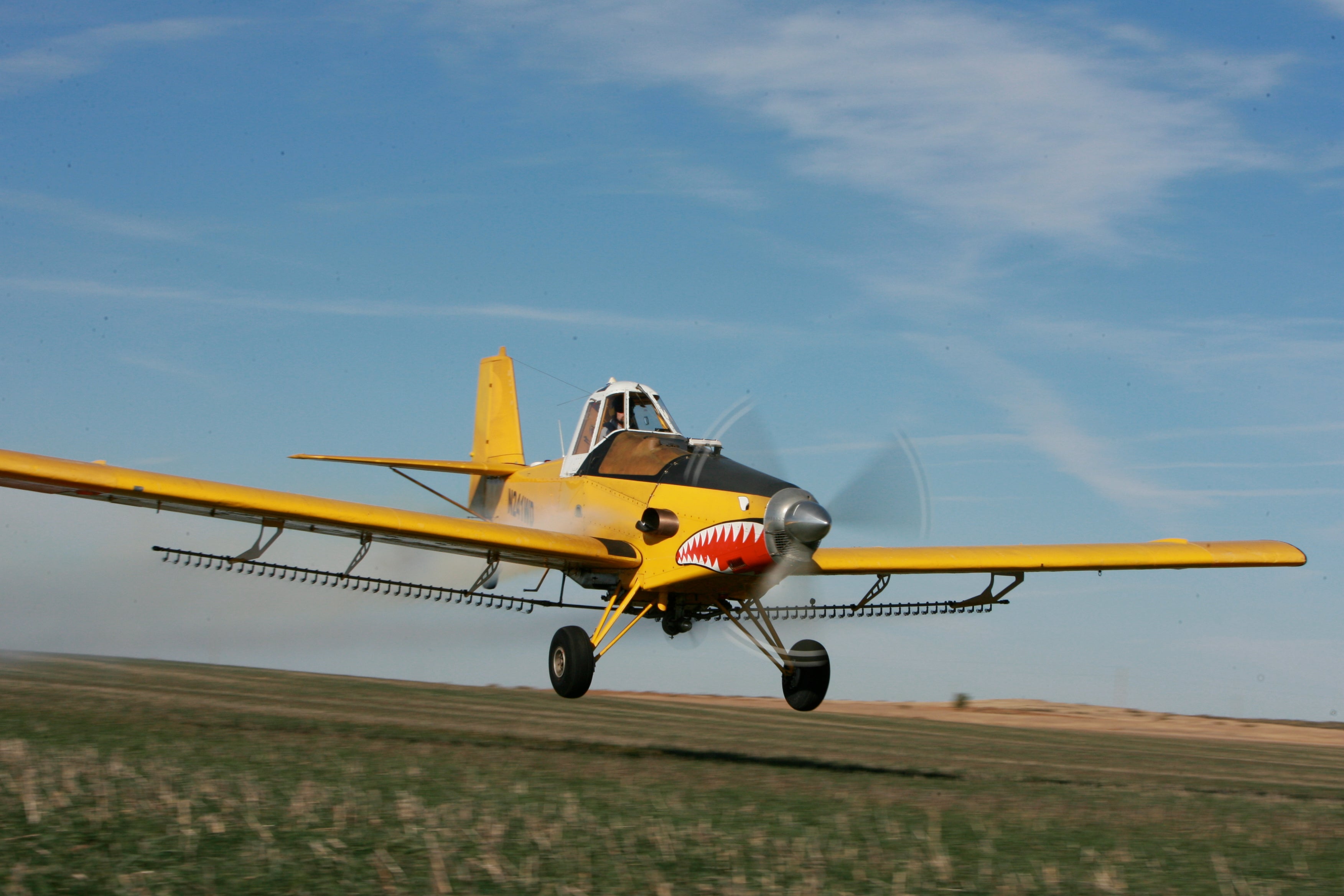
Higher thrust-to-mass ratio than anything outside of military aircraft plus more wing and control surface to weight than anything short of an aerobatics plane. Plus, he got to fly lower and tighter to anything on the ground than any pilot in the civilian world and he got to make bombing runs all day long.
 TomFlasheYoung
> No, I don't thank you for the fish at all
TomFlasheYoung
> No, I don't thank you for the fish at all
07/26/2014 at 16:31 |
|
The first BRS parachutes like those on Cirrus's were made in my parent's basement (a looong time before I came along) My dad is still friends with the guy who invented it
 Phantomlimb
> No, I don't thank you for the fish at all
Phantomlimb
> No, I don't thank you for the fish at all
07/26/2014 at 16:33 |
|
I would probably get a small 4 seater maybe the skylane. They only run a little over $530,000 nicely equipped.
 user314
> No, I don't thank you for the fish at all
user314
> No, I don't thank you for the fish at all
07/26/2014 at 16:33 |
|
Most infamously the Bonanza is what Buddy Holly, Ricky Valens and J.P. "The Big Bopper" Richardson died in which gave rise to the song Miss American Pie
Buddy and The Big Bopper are not really dead you know. They're the two oldest members of the Guild of Calamitous Intent .
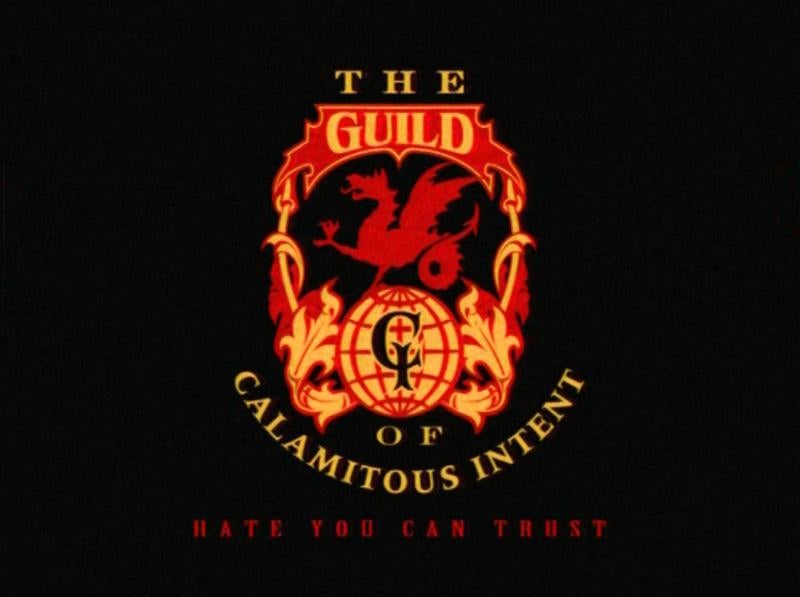
Seriously though, this is an excellent article, very well done.
 Phantomlimb
> No, I don't thank you for the fish at all
Phantomlimb
> No, I don't thank you for the fish at all
07/26/2014 at 16:37 |
|
BTW you did not show a picture of the "Doctor Killer" That is the V-tailed version.
 Nick drives Stick (not Stig)
> Tyler Rogoway
Nick drives Stick (not Stig)
> Tyler Rogoway
07/26/2014 at 16:37 |
|
Just checked my flying clubs operational and you are required to have logged a minimum of 250 hours and have an annual flight review in the type to check out the aircraft.
I think that is a pretty good indication of how much experience is required.
 Tyler Rogoway
> Nick drives Stick (not Stig)
Tyler Rogoway
> Nick drives Stick (not Stig)
07/26/2014 at 16:42 |
|
Flight club rule or FAR? Flight Clubs have individual regulations not based on standard FARs and they differ widely. I seem to know quite a few pilots that got their private through twin and ATP pretty dang fast but maybe things have changed since I was flying or I talked to them.
Love the article, just pointing out that using actual FARs differ than what is posted here.
 mtdrift
> No, I don't thank you for the fish at all
mtdrift
> No, I don't thank you for the fish at all
07/26/2014 at 16:42 |
|
Shit. And I've been spending most of my afternoon on CL looking for Miatas. Thanks a lot.
 Phantomlimb
> Phantomlimb
Phantomlimb
> Phantomlimb
07/26/2014 at 16:48 |
|
 One_Leaf_Short
> No, I don't thank you for the fish at all
One_Leaf_Short
> No, I don't thank you for the fish at all
07/26/2014 at 16:56 |
|
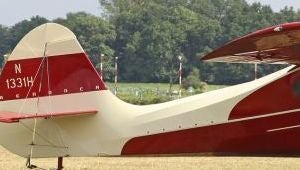
Holy cow! My dad just finished a 1/4 scale RC model of N1331H! This airplane currently lives in Switzerland and has a really interesting history. The couple that owns it are also super cool and provided my dad with a bunch of photos and documentation during the build process, and when it was completed, they even stopped by my parents' place (in the states) to have a look at it.
 Nick drives Stick (not Stig)
> Tyler Rogoway
Nick drives Stick (not Stig)
> Tyler Rogoway
07/26/2014 at 17:02 |
|
Club rules, FAR has no hour requirements on the Cirrus, just high performance endorsement.
 67mgb
> Glucklich21- master of the cones
67mgb
> Glucklich21- master of the cones
07/26/2014 at 17:05 |
|
Remember that "A Mooney is not a hobby. It's a hunger. It will change your life forever. You will be thinking about it every waking minute." ( Flying Magazine March 2006.) Might want to work up to that.
 pintowgn73
> No, I don't thank you for the fish at all
pintowgn73
> No, I don't thank you for the fish at all
07/26/2014 at 17:09 |
|
I was window shopping on CL one day and found this http://sfbay.en.craigslist.org/eby/for/458162…
It's been on there for a couple months. I wish I had the money.
 bohemianleper
> No, I don't thank you for the fish at all
bohemianleper
> No, I don't thank you for the fish at all
07/26/2014 at 17:31 |
|
While the bonanza is called a doctor killer, that usually refers to the v35 model with the V shaped tail, not so much the conventional version posted.
 hismiths
> No, I don't thank you for the fish at all
hismiths
> No, I don't thank you for the fish at all
07/26/2014 at 17:53 |
|
My first airplane, bought in Hawaii, was my training ship, a Grumman-American AA-1B 'Yankee'. Simple, a little demanding due to high sink rate on it's short little wings, but an absolute hoot to fly, practical easy-to-maintain airplane. The next was a '46 Aeronca 7AC Champ, a friendly little cheap flyer that carried my wife and I all over the western US. I'm retired back to Kona, and airplaneless for the first time in 20 years. I'd love to have either one back!
 Ikaros Menelaos
> No, I don't thank you for the fish at all
Ikaros Menelaos
> No, I don't thank you for the fish at all
07/26/2014 at 17:56 |
|
So where does the Mig 21 fit on this buyers guide? I've seen some for sale for new Boxter money ( like this one ). Seems like a good first aircraft, I mean if Russians can fly it amiright? It doesn't have an extra seat for a lady friend but as a commuter it does hit mach 2. That would let me live in say, the Finger Lakes region of NY but commute to the city (~230 miles in a straight line) in about 10 minutes (plus landing/take off time).
 SgtHop
> Nick drives Stick (not Stig)
SgtHop
> Nick drives Stick (not Stig)
07/26/2014 at 17:59 |
|
Yeah, I just picked up my private multi. Only took about 10 hours of training, and I was taking it slow.
 ToeMotor
> No, I don't thank you for the fish at all
ToeMotor
> No, I don't thank you for the fish at all
07/26/2014 at 18:07 |
|
Its Ritchie Valens, not Ricky.....
 Glucklich21- master of the cones
> 67mgb
Glucklich21- master of the cones
> 67mgb
07/26/2014 at 18:10 |
|
I don't think it's by chance Mooney is one 'o' from money.
 SharonNeedles
> No, I don't thank you for the fish at all
SharonNeedles
> No, I don't thank you for the fish at all
07/26/2014 at 18:21 |
|
Best first airplane? Something high wing, much more forgiving than a mid or low wing plane. Piper Cub gets my vote.
 Glucklich21- master of the cones
> Phantomlimb
Glucklich21- master of the cones
> Phantomlimb
07/26/2014 at 18:26 |
|
But it's so pretty!
 toecutter (so grey, I gotta wear shades)
> No, I don't thank you for the fish at all
toecutter (so grey, I gotta wear shades)
> No, I don't thank you for the fish at all
07/26/2014 at 18:29 |
|
Cool article.
Expensive hobby.
But I enjoyed the info. Thanks.
 kevin_kancer
> No, I don't thank you for the fish at all
kevin_kancer
> No, I don't thank you for the fish at all
07/26/2014 at 18:29 |
|
First (and only) plane I ever got a chance to fly, 1947 Aeronca. Tail-dragger, wooden frame wrapped in canvas, stick-operated. 17 year old me had a blast.
 Phantomlimb
> Glucklich21- master of the cones
Phantomlimb
> Glucklich21- master of the cones
07/26/2014 at 18:35 |
|
Don't be fooled its a KILLER....
 NotUnlessRoundIsFunny
> No, I don't thank you for the fish at all
NotUnlessRoundIsFunny
> No, I don't thank you for the fish at all
07/26/2014 at 18:41 |
|
Wow. That was a fantastic write up! Thanks.
 factsonly1
> No, I don't thank you for the fish at all
factsonly1
> No, I don't thank you for the fish at all
07/26/2014 at 18:48 |
|
prviate
 Gripevo1
> No, I don't thank you for the fish at all
Gripevo1
> No, I don't thank you for the fish at all
07/26/2014 at 18:53 |
|
My first flight was in a 172, during which i got to experience takeoff, landing, decent crosswinds and a little wake turbulence...what a great little plane- it was so easy for an intimidated first timer. Damn i should really go flying again -_-
 Mr Joshua
> No, I don't thank you for the fish at all
Mr Joshua
> No, I don't thank you for the fish at all
07/26/2014 at 19:15 |
|
In my wine soaked delusions of grandeur and "what if" land, my choices, should that eagle shit great piles of cash on me one day, would be either the the Antilles G-21 Super Goose or a Basler BT-67. I had a single engine license 20 years ago and I've long been a fan of re-engineering older cars as well as airframes to retain the form but gain reliability, performance and more ease of use. Both these aircraft may look old but they are both extremely modern state of the art aircraft. The 5 blades on the dc3 should be a dead giveaway. The Super Goose is an old shape but 100% new.
http://www.antillesseaplanes.com/
http://www.baslerturbo.com/bt-67.html
 69montego
> Mr Joshua
69montego
> Mr Joshua
07/26/2014 at 19:23 |
|
a company around here foes those too....Dodson Aviation.
they'll build you a turbine DC3 anyway you want it
 69montego
> No, I don't thank you for the fish at all
69montego
> No, I don't thank you for the fish at all
07/26/2014 at 19:25 |
|
how about a Fieseler Stork? I think these are still being made by somebody.
Minimum stall speed of 20mph and the ability to take off and land on a football field.what's not to like?
 Murphie
> No, I don't thank you for the fish at all
Murphie
> No, I don't thank you for the fish at all
07/26/2014 at 19:31 |
|
Great summary - some thoughts though...
You've listed some very different planes in similar categories, and I just want to say fly 'em, 'cause they are different. The Cessna 182 and the Piper Dakota are on your list, and have very similar specs, payload, speed, etc, at least if similar vintage. The 182/Skylane however, reminds me of flying a GMC Yukon, a little heavy on the controls, while the Dakota feels like a sports car, fun-fun-fun to fly. A Piper Cub (at least the J-3)has very similar specs to another great intro taildragger you mention, the Aeronca Champ. But its so different to fly the two - solo you sit in the back of the Cub, and the front of the Champ - huge difference in feel in the centers of gravity and motion. The Aeronca is also much lighter on the controls, really sweet, while the J-3 is a little more rough and tumble. Bottom line, just like cars, fly a lot of planes, they are really different in feel and character, the specs don't tell the story. The right plane will speak to you. (And as for the doctor killer - they fly just as smooth as silk, very memorable, I was sorry tempted once....)
 Triborough
> No, I don't thank you for the fish at all
Triborough
> No, I don't thank you for the fish at all
07/26/2014 at 19:31 |
|
Wait, I can't just go out and buy a used B-52?
 Gimmi-Sagan-Om-Draken
> No, I don't thank you for the fish at all
Gimmi-Sagan-Om-Draken
> No, I don't thank you for the fish at all
07/26/2014 at 19:38 |
|
Firstly I think its Ritchie Valens, not Ricky, kids. I'm fairly sure the old Bonanza was the killer, they were forced to change to a standard vertical stabilizer/ rudder/elevator configuration instead of the V.
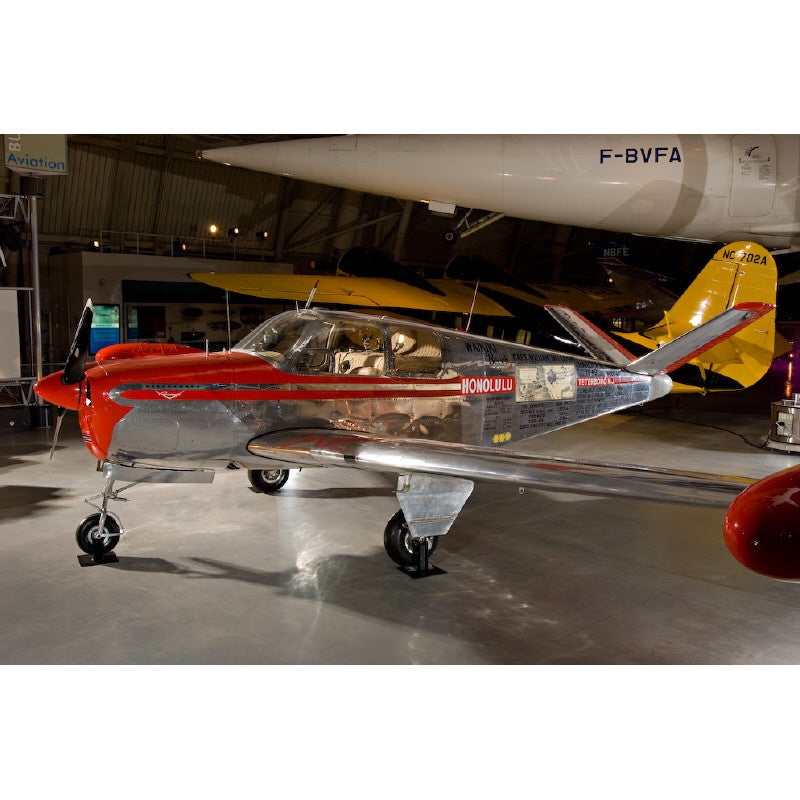
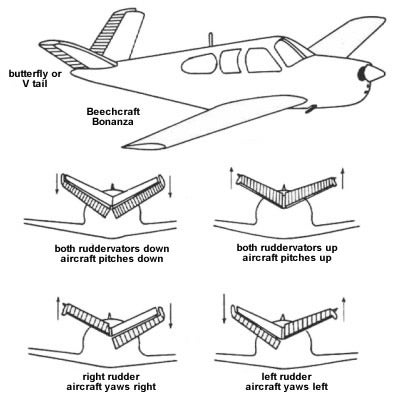
 SkilletHead
> No, I don't thank you for the fish at all
SkilletHead
> No, I don't thank you for the fish at all
07/26/2014 at 19:50 |
|
Are you implying that an Grumman Albatross isn't the ideal first plane?
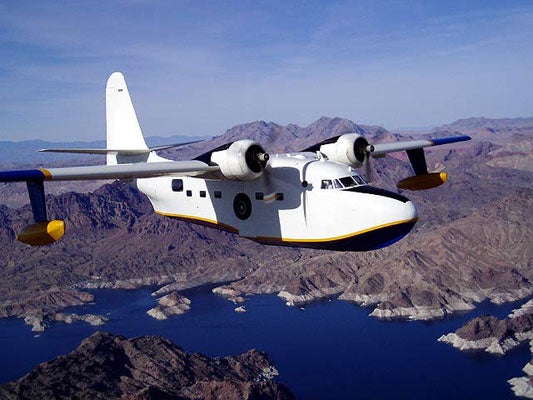
 user314
> 69montego
user314
> 69montego
07/26/2014 at 20:31 |
|
There are a few 3/4 size homebuilts around, but the last direct variant was the French MS-500 series, and they stopped building them in '65.
 EvilFD
> No, I don't thank you for the fish at all
EvilFD
> No, I don't thank you for the fish at all
07/26/2014 at 21:18 |
|
Great article! I actually learned on a 177 RG
 NRVN_QSR
> No, I don't thank you for the fish at all
NRVN_QSR
> No, I don't thank you for the fish at all
07/26/2014 at 21:32 |
|
No retractable landing gears? I was really looking into the Lancair 320 as a decent (and good-looking) first plane. Also, what's the consensus on tricycle landing gear and conventional tail draggers? I see that this list is a mix of both but I've heard that planes with tricycle landing gears are easier for first-timers.
 Fenderaddict2
> Phantomlimb
Fenderaddict2
> Phantomlimb
07/26/2014 at 21:41 |
|
Favourite diecast as a kid was the V-tail. Personally I'd buy a Diamond. I like the bubble canopy...I always pretended I was flying a fighter.
 Frank Grimes
> No, I don't thank you for the fish at all
Frank Grimes
> No, I don't thank you for the fish at all
07/26/2014 at 21:44 |
|
I was recently looking at the Honda Jet cuz I might be rich some day the fact I cant fly to hawaii bummed me out. I just want to buy something and fly around all over the world and not die.
 Fenderaddict2
> Gripevo1
Fenderaddict2
> Gripevo1
07/26/2014 at 21:53 |
|
this article had the same affect on me. I'd love to fly again, then I remember my age, the two kids and the mortgage. Dang, where have all the good times gone? ;-)
 The Transporter
> Tyler Rogoway
The Transporter
> Tyler Rogoway
07/26/2014 at 22:06 |
|
Fun fact: FARs do not require any sort of instructor rating to teach aerobatics. I wouldn't use the FARs as a guideline for what is safe or unsafe. They aren't looking out for your safety, they're looking out for the safety of people and property on the ground as well as the general flying public.
 Trunk Impaired 318
> No, I don't thank you for the fish at all
Trunk Impaired 318
> No, I don't thank you for the fish at all
07/26/2014 at 22:19 |
|
Im all about the Piper Pawnee
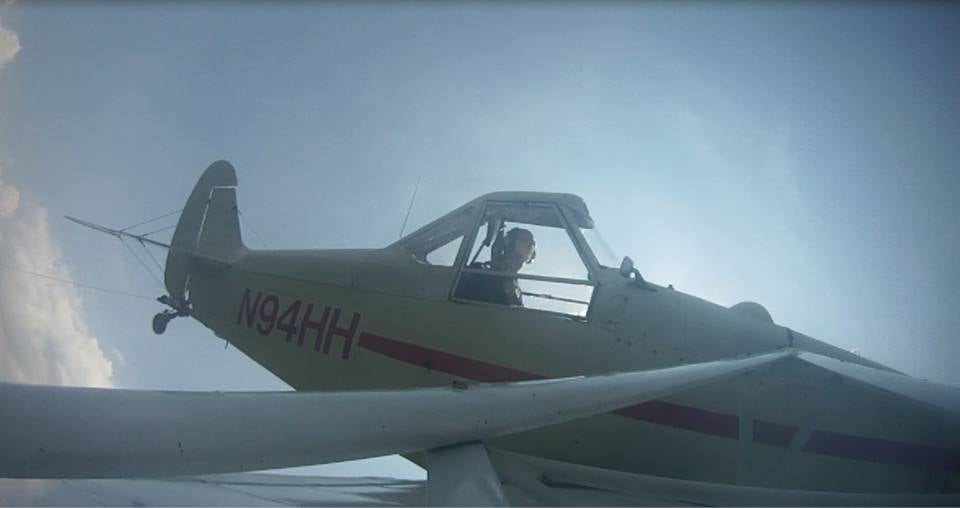
 The Artist Formerly Known As...
> Glucklich21- master of the cones
The Artist Formerly Known As...
> Glucklich21- master of the cones
07/26/2014 at 22:33 |
|
These, not the current Beech Bonanazas, are the real doctor killers. Cool plane, though.
 The Artist Formerly Known As...
> No, I don't thank you for the fish at all
The Artist Formerly Known As...
> No, I don't thank you for the fish at all
07/26/2014 at 22:36 |
|
I don't know if I agree with this: "[The Beech Bonanza] may look fairly plain (plane?), but they don't call the Bonanza the Doctor Killer for no reason." These were doctor killers, but the V-tail was a large part of the reason for its tricky performance. The newer models are a bit better mannered. For doctors (and lawyers) bent on self-destruction, there's always the Mooney.
 Incognigro
> No, I don't thank you for the fish at all
Incognigro
> No, I don't thank you for the fish at all
07/26/2014 at 22:48 |
|
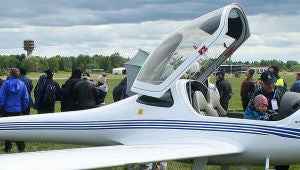
I trained in a Diamond to get my Private Pilots' License. It gets real hot in there
 rb1971 ARGQF+CayenneTurbo+E9+328GTS+R90S
> No, I don't thank you for the fish at all
rb1971 ARGQF+CayenneTurbo+E9+328GTS+R90S
> No, I don't thank you for the fish at all
07/26/2014 at 22:57 |
|
As I said to my buddy when he got divorced and bought a Beechcraft, I thought you already learned the most important lesson of life: "If it flies, floats or f*&!s, it's cheaper to rent."
 TommyRocker
> Gimmi-Sagan-Om-Draken
TommyRocker
> Gimmi-Sagan-Om-Draken
07/26/2014 at 23:16 |
|
fairly sure the v tail issue was resolved and most bonanza deaths were due to pilots flying a plane they couldn't handle outside of its designed performance envelope.
 TommyRocker
> The Artist Formerly Known As...
TommyRocker
> The Artist Formerly Known As...
07/26/2014 at 23:21 |
|
The high performance nature of it was more deadly than the v tail issues(which were sorted)
 Gimmi-Sagan-Om-Draken
> TommyRocker
Gimmi-Sagan-Om-Draken
> TommyRocker
07/26/2014 at 23:23 |
|
I can't remember, I worked on electronic systems at Saab until 1976. This was years ago, I thought I recalled talk about instability because of that, maybe they ironed it out.
 TommyRocker
> Gimmi-Sagan-Om-Draken
TommyRocker
> Gimmi-Sagan-Om-Draken
07/26/2014 at 23:26 |
|
The Bonanza is a reasonably high performance aircraft today, but was pretty insane compared to the wood and cloth planes most pilots were used to when it was introduced. I remember an article that explained the issues with the v tail and the way it was corrected, then broke down the the crashes and investigations and found that the majority were actually pilot error. I wish I had the article now.
 Thunder
> No, I don't thank you for the fish at all
Thunder
> No, I don't thank you for the fish at all
07/26/2014 at 23:38 |
|
You missed my favorite, in part because I grew up riding with my dad in one: (1978) Grumman American Tiger, AA-5B.
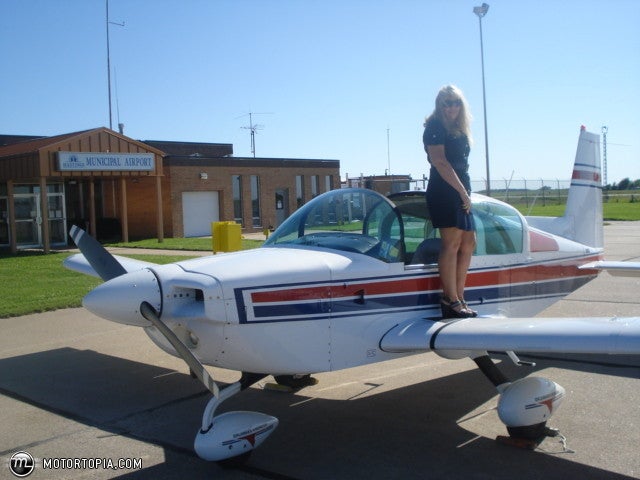
Sorry, I'm afraid the young lady does NOT come along with the aircraft.
180 HP, fixed gear, fixed prop, four seats. You may notice (if you can look past the girl) that there are no doors - instead, the canopy slides back, fighter-style, and as a bonus you can open it in flight. What you can't readily see in this picture is the lack of rivets. Rather than putting hundreds if not thousands of little bumps in the airstream, this line of aircraft (running from the AA-1 two-seat trainer up through the Tiger) opted instead for bonded aluminum construction. Put another way, it's glued together. That makes for significant drag reduction, and therefore greater speed. It doesn't have a steerable nosewheel - it's simpler, saving weight, and you steer by differential braking of the main wheels. It does mean that coming in on the nosewheel would be a VERY bad thing.
My summary of the Tiger, which was put back in production through a series of manufacturers (it's that good), is that it's a plane that just loves to fly. It feels playful, in the way that the Piper Warrior and Cessna 172 I have my (loggable) time in do not. You better be proficient in slipping the aircraft, though, because that slick airframe means it doesn't readily want to come down.
When I become independently wealthy and decide I want to own a hole in the sky into which I can throw money, mine will be a Tiger.
 Thunder
> Glucklich21- master of the cones
Thunder
> Glucklich21- master of the cones
07/26/2014 at 23:46 |
|
My flying club, Wings of Carolina, has four 152's, three Warriors (in which I'm checked out), three 172's (I didn't opt for them, but have experience in the 172 as well), and three Mooney 201's.
The club requirements for the Mooneys are 250 hours total time and complex endorsement, or 150 hours, complex, and instrument rating. Therefore, working on my instrument is my next major step.
 helmet
> No, I don't thank you for the fish at all
helmet
> No, I don't thank you for the fish at all
07/27/2014 at 00:08 |
|
What about an Evans VP-1 or VP-2...?
 rig_pig
> No, I don't thank you for the fish at all
rig_pig
> No, I don't thank you for the fish at all
07/27/2014 at 01:36 |
|
De Havilland Chipmunk for me. True, it is of classic status and a tail dragger but fixed gear and prop, 145hp, simplicity and fighter style tandem seating wins it. The fact that I maintain this exact aircraft helps as well!
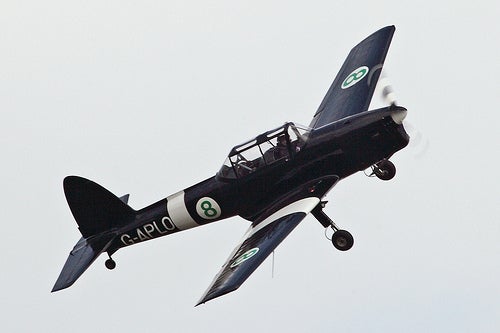
 Axial
> No, I don't thank you for the fish at all
Axial
> No, I don't thank you for the fish at all
07/27/2014 at 03:05 |
|
My dream aircraft is a Bf.109 E, but that's never going to happen (unless I build one myself) so the more attainable dream plane is one of those zippy little fixed-gear, tandem seat sport planes.
I hate side-by-side seating. So very awful for both aerodynamics and aesthetics at small consumer plane end of the size spectrum.
 sklooner
> No, I don't thank you for the fish at all
sklooner
> No, I don't thank you for the fish at all
07/27/2014 at 03:52 |
|
what no ercoupe ?
 RedR58
> No, I don't thank you for the fish at all
RedR58
> No, I don't thank you for the fish at all
07/27/2014 at 04:42 |
|
There's always the 1992 Wilson Cri-Cri. Kit aircraft. Fully aerobatic. Enjoy.
 FrostyRose
> No, I don't thank you for the fish at all
FrostyRose
> No, I don't thank you for the fish at all
07/27/2014 at 08:58 |
|
Next up do a helicopter buyers guide, though it will probably just come down to a robinson. Currently saving up for a Helo flight school so yea :D
 KayGB
> No, I don't thank you for the fish at all
KayGB
> No, I don't thank you for the fish at all
07/27/2014 at 09:01 |
|
Given a competent instructor, there's absolutely no reason a student couldn't go ab initio even on a P-51 or practically any airplane for that matter.
 Kiltedpadre
> Gimmi-Sagan-Om-Draken
Kiltedpadre
> Gimmi-Sagan-Om-Draken
07/27/2014 at 09:07 |
|
Exactly, I was scrolling through comments specifically to see if anyone had mentioned the v-tail to t-tail change on the Bonanza. I worked for a brief time with a mechanic that specialized in the older Bonanzas and heard some interesting stories from owners about some of their flight characteristics as opposed to other planes they owned. Pretty much all of them had at least two planes and seemed to regard the V-tail as being mainly a toy to be broken out for specific occasions.
 Turbineguy: Nom de Zoom
> No, I don't thank you for the fish at all
Turbineguy: Nom de Zoom
> No, I don't thank you for the fish at all
07/27/2014 at 09:28 |
|
Not all Bonanzas were "fork-tailed doctor killers" just the V-tails. Even so, it's still not an airplane for a noob. Insurance companies are the final deciders.
 MrPedantic
> NRVN_QSR
MrPedantic
> NRVN_QSR
07/27/2014 at 09:50 |
|
DO NOT get a lancair 320 as a first plane. Please. It's a very high performance wing/tail.
But I have a feeling the insurance company will make sure you don't.
 MrPedantic
> Turbineguy: Nom de Zoom
MrPedantic
> Turbineguy: Nom de Zoom
07/27/2014 at 10:04 |
|
Only as much as the Cirri? are the new "young successful professional with too much confidence who's fallen for the marketing" killers. There wasn't really anything inherently wrong with the first bonanza's, they were just very new and very fast compared to everything out there, and flown by people who had no business flying them.
 Turbineguy: Nom de Zoom
> MrPedantic
Turbineguy: Nom de Zoom
> MrPedantic
07/27/2014 at 11:24 |
|
You're correct about the first Bonanzas being faster than most anything else in piston singles; and wealthy weekend pilots often didn't keep up with the needed skills to be proficient and safe. But there was a flaw in the tail design than caused a bunch of accidents and resulted in an AD to reinforce the airframe. IIRC it had to do with flight outside the envelope, and flutter issues that resulted. Which, of course goes right back to maintaining proficiency in a high performance aircraft. There has been a similar issue with Cirrus pilots, that have bought SRs soon after getting a private license. These folks with money become overconfident in the ballistic chute's ability to save their ass, and this has led to quite a few accidents that could have been avoided. (IMHO as a flight instructor)
 Michael Zaite
> No, I don't thank you for the fish at all
Michael Zaite
> No, I don't thank you for the fish at all
07/27/2014 at 11:49 |
|
I've been in Aviation since 1999, have a Commercial Multi Instrument and a CFI-I as well as having a brief "career" as an airline pilot.
Not once in all that time did I ever realistically consider buying an airplane. I'm not a super pragmatic guy (4 cars two bikes and race LeMons) but the ownership costs are absurd for anyone not in the 1%. Worse than a Boat kind of stupid money.
For what most people actually do with their planes (leave them sitting 48 weeks of the year, or pattern work) renting with a club is still where the smart money is.
 krwalsh
> No, I don't thank you for the fish at all
krwalsh
> No, I don't thank you for the fish at all
07/27/2014 at 12:26 |
|
"Hell, the FAA outright says you need a "complex" (that is, any airplane with two of the following features: retractable landing gear, flaps, and a variable-pitch propeller) endorsement and a high-performance endorsement from a qualified flight instructor before you can legally fly something like that."
Nope. The complex aircraft definition requires ALL 3, not 2, unless you are talking about a seaplane, in which case the retractable gear is not required:
61.1(3)(b)(iii) says " Complex airplane means an airplane that has a retractable landing gear, flaps, and a controllable pitch propeller, including airplanes equipped with an engine control system consisting of a digital computer and associated accessories for controlling the engine and propeller, such as a full authority digital engine control; or, in the case of a seaplane, flaps and a controllable pitch propeller, including seaplanes equipped with an engine control system consisting of a digital computer and associated accessories for controlling the engine and propeller, such as a full authority digital engine control."
The high performance endorsement is required to fly an airplane with 200hp or more. The high performance and complex endorsements are separate.
 ifly737NG
> Tyler Rogoway
ifly737NG
> Tyler Rogoway
07/27/2014 at 15:21 |
|
Thousands of hours to operate an SR20 is just bullocks. Hundreds for a multi is also a load. Let me guess, you think the recent legislation requiring 1500hrs and an ATP to sit right seat in a regional jet is cool too.
It all comes down to quality of training and personal dedication to safety. I have had and have seen multiple students safely learn to fly in their own Bonanzas. We also train commercial students with less than 200hrs in them at the school I work for. The plane demands a little respect, as long as you give her that she'll take care of you. You buy a plane that's a handful, expect more training. Also the Bonanza pictured is hardly a doctor killer. The name came from the original V-tail version which has poor spin characteristics and is a bit weak in crosswinds.
Also, the reason your buddies get a couple hundred hours of multi before their ATP checkride is for the sake of having multi time for the resume. It looks good to have it. Normally multi engine training takes less than 10hrs unless you drag it out. It adds some new procedures but it's hardly rocket science. You have to start somewhere. The only way you get that "more time" is by actually flying. I've seen people go zero-to-hero in a multi too without even touching a single. Again. Training.
You can claim hazardous hour brackets and wave fear flags, but none of that solves the problem. Quality training and thorough instruction makes a lot more difference than requiring a set amount of experience to do something. Putting around in a 152 for a few hundred hours is not going to help you fly a jet any better. You have to keep stepping up to keep growing and sharpening your abilities.
 Nascarfan14
> Nick drives Stick (not Stig)
Nascarfan14
> Nick drives Stick (not Stig)
07/27/2014 at 16:00 |
|
You don't need a high performance for the SR-20
FAR 61.31 PART F
1) Except as provided in paragraph (f)(2) of this section, no person may act as pilot in command of a high-performance airplane (an airplane with an engine of more than 200 horsepower ), unless the person has—
(i) Received and logged ground and flight training from an authorized instructor in a high-performance airplane, or in a flight simulator or flight training device that is representative of a high-performance airplane, and has been found proficient in the operation and systems of the airplane; and
(ii) Received a one-time endorsement in the pilot's logbook from an authorized instructor who certifies the person is proficient to operate a high-performance airplane.
The SR20 has exactly 200 horsepower. If it had 201 horsepower, it would require a high performance endorsement.
 Rock Bottom
> No, I don't thank you for the fish at all
Rock Bottom
> No, I don't thank you for the fish at all
07/27/2014 at 16:17 |
|
Pretty sure the only Bonanza to earn the "Doctor Killer" moniker was the old v-tail variant. Most of the odd handling characteristics were corrected in the later models (as pictured). The bungee system in Walter Beech's design was often improperly maintained and failure would make for some "interesting" flying. Once that system was taken out of the equation, the plane became fairly docile. Not C172 docile, but still pretty easy to fly.
Sincerely, former Beechcraft aeronautical engineer
 Dadu
> rig_pig
Dadu
> rig_pig
07/27/2014 at 16:40 |
|
OI! OI!
 RUFFORD
> Mr Joshua
RUFFORD
> Mr Joshua
07/27/2014 at 17:11 |
|
Antilles hasn't put out any info or updates in about 3 years, I don't think they'll be making a turbine goose after all...
 RUFFORD
> ifly737NG
RUFFORD
> ifly737NG
07/27/2014 at 17:24 |
|
I'm pretty sure the doctor killer came from the in-flight structural failures and breakups that were happening to the v-tails. The empennage breaking off in flight is a bad deal. I wouldn't be surprised if the cirrus became the new doctor killer, low time pilots in hot rod aircraft doesn't always end well. Cirrus has made a point to brag that they have a very high percentage of sales to people with zero flight time. That, along with an aerodynamically bad aircraft (the plane is not recoverable from a spin, they proved that it is "spin resistant" and has a fancy parachute so the FAA ok'd it) is a terrible combination
 Dake
> No, I don't thank you for the fish at all
Dake
> No, I don't thank you for the fish at all
07/27/2014 at 17:27 |
|
Decent straight-forward article but yes, it's important to point out that most club minimums are more stringent due to insurance companies, not Federal Aviation Regulations. For example the high-performance/complex sign off could be done in one hour if you found a flight instructor willing to put their ticket on the line. Then you could go out and buy your own plane and have at it.
The FARs tend to go with minimum levels of safety because the caveat is always more conservative trumps all. If you're not ready, the onus is on you to make that call regardless of whether you've met an arbitrary time limit. If you take your new complex plane out and crash after only an hour of instruction, you will be blamed (though your instructor likely will too). Conversely, I have eleven-thousand hours now but I wouldn't just go hop in a 152 again without spending an hour or two with an instructor because it's been fifteen years since I flew something that small. This in spite of the fact that it would be technically legal for me to do so.
Cost of ownership can't be understated though - like a boat or pool but worse. Buying a plane is easy. Keeping it airworthy is something else entirely, and the only thing that can be more expensive than flying it a lot, is not flying it at all.
 RUFFORD
> No, I don't thank you for the fish at all
RUFFORD
> No, I don't thank you for the fish at all
07/27/2014 at 17:29 |
|
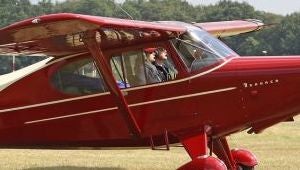
These are quite rare to find. Some are popping up lately around $20,000, but they have an AD on them about corrosion on the spars. That means a lotta work needs to be done to make them airworthy.
 RUFFORD
> Turbineguy: Nom de Zoom
RUFFORD
> Turbineguy: Nom de Zoom
07/27/2014 at 17:46 |
|
I have the same concern about the Cirrus. I've flown a SR-20 and I didn't like it, to me it seems like the lazy man's airplane. There was no talk of speeds and settings, it was all "Keep your feet on the floor, move the power lever to this detent, and just squeeze a little for the flare." I recognize that this is more a reflection on the instructor, but this was at a Cirrus Training Center.
 RUFFORD
> SkilletHead
RUFFORD
> SkilletHead
07/27/2014 at 17:55 |
|
I think you just start with a Widgeon (or build a Gweduck http://www.gweduck.com/ ) and work your way up from there.
 OutSouth
> No, I don't thank you for the fish at all
OutSouth
> No, I don't thank you for the fish at all
07/27/2014 at 18:37 |
|
Hint: Learn to fly before you buy.
 Mr Joshua
> RUFFORD
Mr Joshua
> RUFFORD
07/27/2014 at 18:57 |
|
Now that is sad. I must do some digging to see what happened. I've always admired Jimmy Buffet and remember when he had his Albatross. He has a 1939 goose now. What could be cooler than flying the Caribbean, stopping wherever the beer is cold. Look up his song Jamaica Mistaka. He was stopping for a burger on some island, just preparing to land and they thought he was a drug runner so they opened fire.
 Turbineguy: Nom de Zoom
> RUFFORD
Turbineguy: Nom de Zoom
> RUFFORD
07/27/2014 at 19:32 |
|
I've never attended Cirrus training, but know a guy at my home 'drome with an SR-20 who I've flown with a few times on some long trips. "Feet flat on the floor"? Yikes.
 Kevin Barrett
> No, I don't thank you for the fish at all
Kevin Barrett
> No, I don't thank you for the fish at all
07/27/2014 at 22:39 |
|
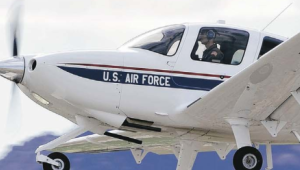
Well that explains student pilots at the Air Race Classic not knowing their Cirruses even had a governor. It's under here, by the way, in case anybody else ever has to de-cowl a bunch of air planes to torque-stripe the cheating bits. Bring three friends to hold all the panels.
 RUFFORD
> No, I don't thank you for the fish at all
RUFFORD
> No, I don't thank you for the fish at all
07/27/2014 at 22:55 |
|
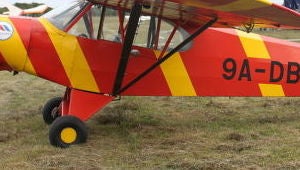
A PA-11 or PA-12 is remarkable similar to a PA-18 Supercub, and about $100,000 less.
 Turbineguy: Nom de Zoom
> Triborough
Turbineguy: Nom de Zoom
> Triborough
07/27/2014 at 23:27 |
|
If you can afford to feed eight Pratt TF33 screamers you can afford something smaller and new :)
 RUFFORD
> No, I don't thank you for the fish at all
RUFFORD
> No, I don't thank you for the fish at all
07/27/2014 at 23:29 |
|
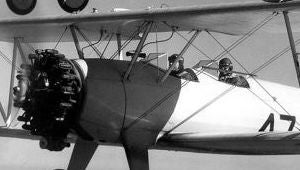
Many military trainers were designed to be a handful to make the pilots more hands on, sometimes the end result was a plane that was harder to fly than a fighter. A gentleman that owns a very nice T-6 Texan explained to me "once you get real good flying a Corsair, you can fly a Mustang. Once you get good at flying a Mustang, you can fly a T-6."
 RUFFORD
> Turbineguy: Nom de Zoom
RUFFORD
> Turbineguy: Nom de Zoom
07/27/2014 at 23:43 |
|
The BUFF makes those guys rollin' coal look downright clean and tidy
 RUFFORD
> Ikaros Menelaos
RUFFORD
> Ikaros Menelaos
07/27/2014 at 23:51 |
|
You can buy a Mig for around 20 grand, but you have to feed it. You're looking at over $2000 an hour in fuel alone for a Mig-17.
 RUFFORD
> No, I don't thank you for the fish at all
RUFFORD
> No, I don't thank you for the fish at all
07/27/2014 at 23:55 |
|
Open Airplane is a novel idea as well, kind of like a national flying club. Once you're licensed and checked out you can go to any other flight school in the network and use their planes without a separate check-out. https://www.openairplane.com/
 Turbineguy: Nom de Zoom
> RUFFORD
Turbineguy: Nom de Zoom
> RUFFORD
07/28/2014 at 10:36 |
|
LOL. An old pal was a NAV in the B-52 out of Barksdale in the 80's. He told me squadron takeoffs would block out the sun.
 ifly737NG
> RUFFORD
ifly737NG
> RUFFORD
07/28/2014 at 11:34 |
|
I'd forgotten about the reinforcement AD's on the V-tails, good point. I've only flown one once and didn't care for it. It seemed to wallow through the sky. Most of my Bonanza time is F33A/C. It's a very honest airplane. You give it good inputs, it gives you good outputs. You screw up, it will screw you up. It's a matter of respecting the airframe.
The Cirrus issue is not a new one though as you point out - it may be the new doctor killer. However, the real responsibility is still left with the pilot and (moreso) their instructor to ensure proficiency and safety in operation. Proficiency and safety are not measured in flight hours. A couple thousand hours is not needed to get into a Cirrus. A good knowledge and understanding of how it can kill you is.
I still maintain that ccomplacency is one of the biggest problems in the high performance single market. Moreso than sheer inexperience. Sheer inexperience rarely are the root causes of CFIT or gear up landings or the myriad of other issues plaguing the segment. Complacency though....
 RUFFORD
> ifly737NG
RUFFORD
> ifly737NG
07/28/2014 at 12:11 |
|
A majority of the loss-of-control accidents in the cirrus are with pilots that have over 900 hours total time. A thousand hours are not needed to fly a cirrus, but even after that point you're not out of the woods from a safety stand point. http://www.stevewilsonblog.com/the-cirrus-air…
 MrPedantic
> Turbineguy: Nom de Zoom
MrPedantic
> Turbineguy: Nom de Zoom
07/28/2014 at 13:50 |
|
"flight outside the envelope"
I would still argue that if something fails outside of the envelope, then there is nothing inherently wrong with the airplane. It's just not as overbuilt as the later model.
The fact that they issued and AD might have just as much to do with peace of mind for the customers who had grown weary from the rumors.
 Turbineguy: Nom de Zoom
> MrPedantic
Turbineguy: Nom de Zoom
> MrPedantic
07/28/2014 at 14:17 |
|
No doubt. If I blow past Vne in a dive and my windshield caves in, it sure isn't the mfr's fault that I was an idiot. What I found poking around into the V-tail's issues mentioned flight outside the envelope accounted for the majority of accidents.
 quarterlifecrisis
> No, I don't thank you for the fish at all
quarterlifecrisis
> No, I don't thank you for the fish at all
07/29/2014 at 08:14 |
|
Very very well written. I had a subscription to Flying from 5th grade through grad school...let it lapse...and came to terms with the fact that I wouldn't be flying any time soon.
 BZiel
> Dake
BZiel
> Dake
07/29/2014 at 14:52 |
|
^
This.
While I don't have 11,000 hours, it's been long enough since I trained in and flew a 152 for my Private, that I too would want some windshield time with an instructor.